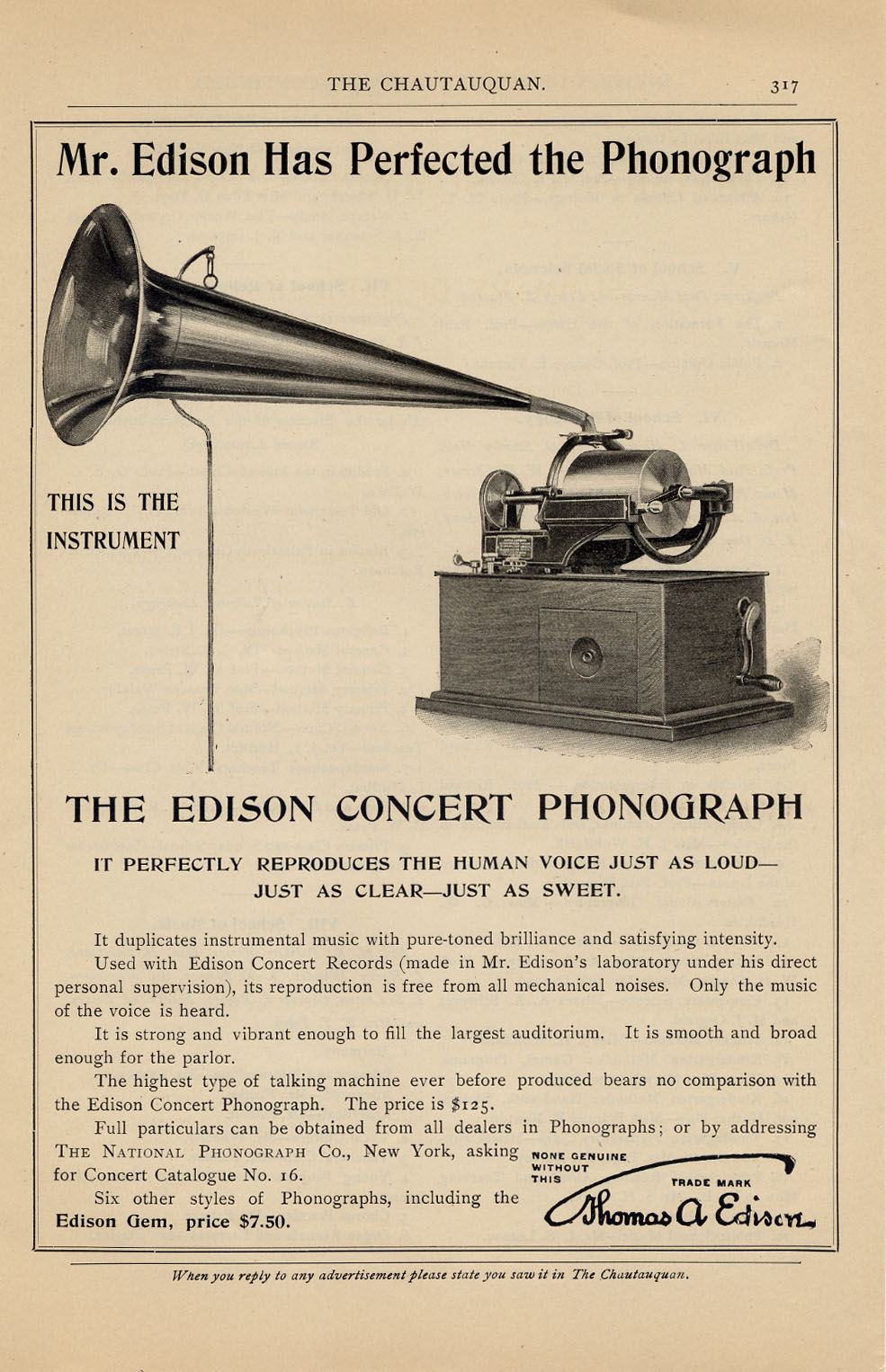1900-1905
Ads
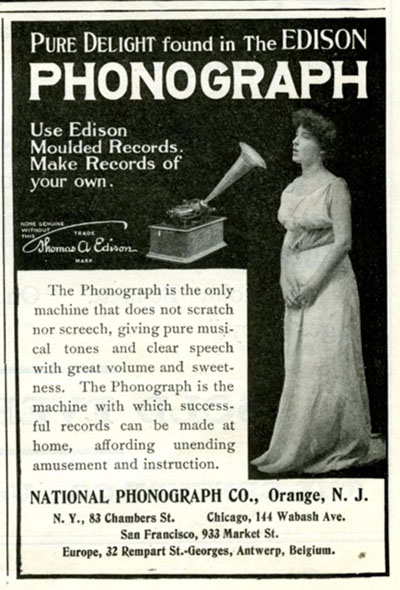
Delight and
Music of the World Enters the Home
This gallery features
phonograph ads from 1900 to 1905.
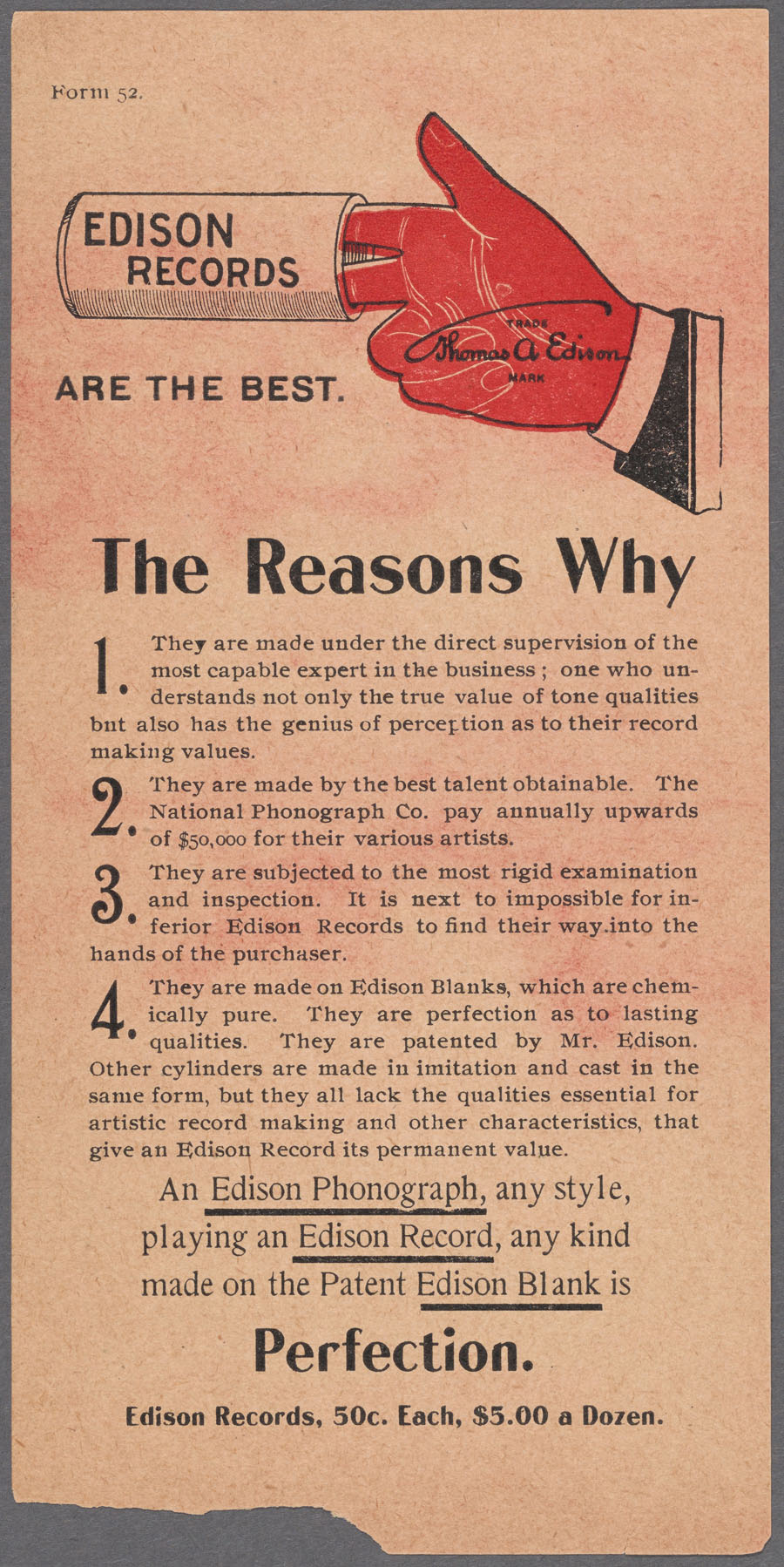
Edison Form 52, 1900
(Courtesy NYPL) (5)
"Perfectly reproduces
the human voice just as loud--just as clear--just as sweet."
1900
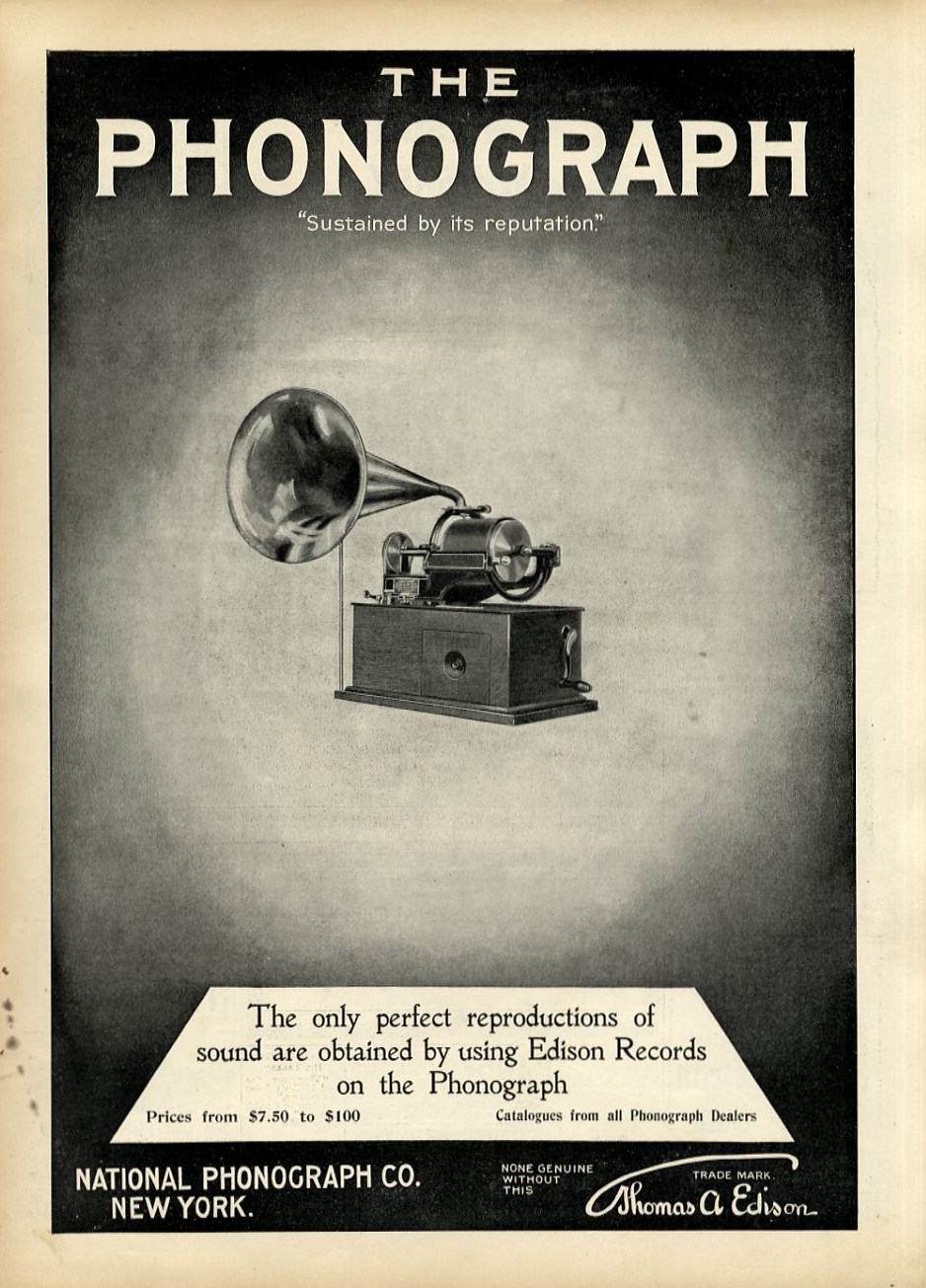
Puck, 1900
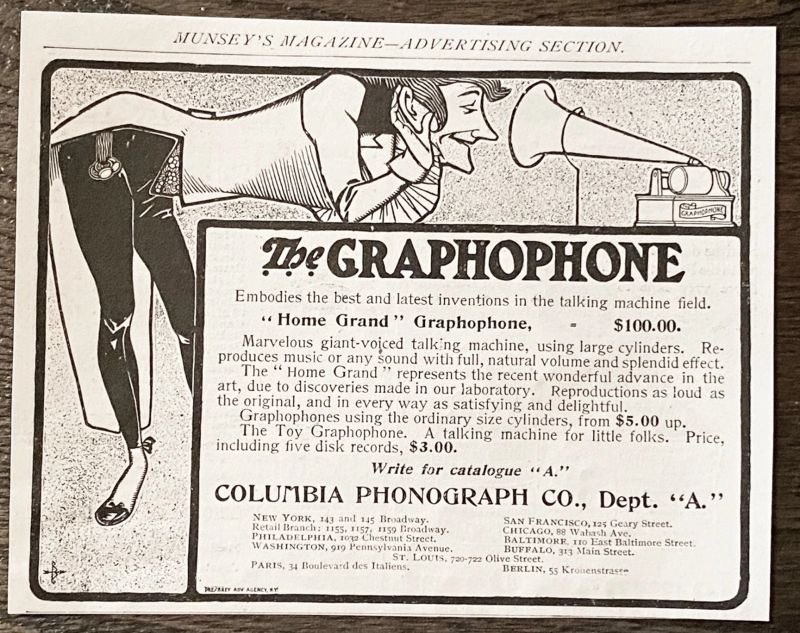
Munsey's, 1900
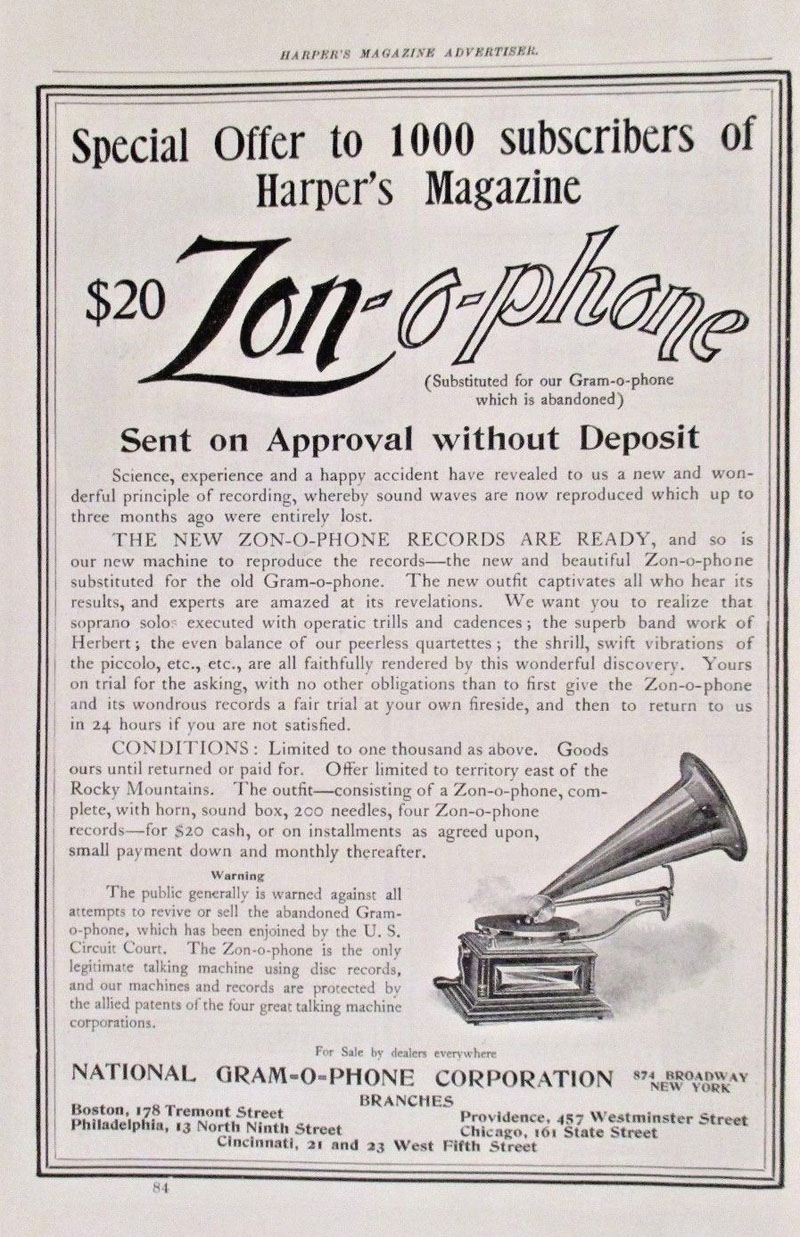
Harper's Magazine,
1900
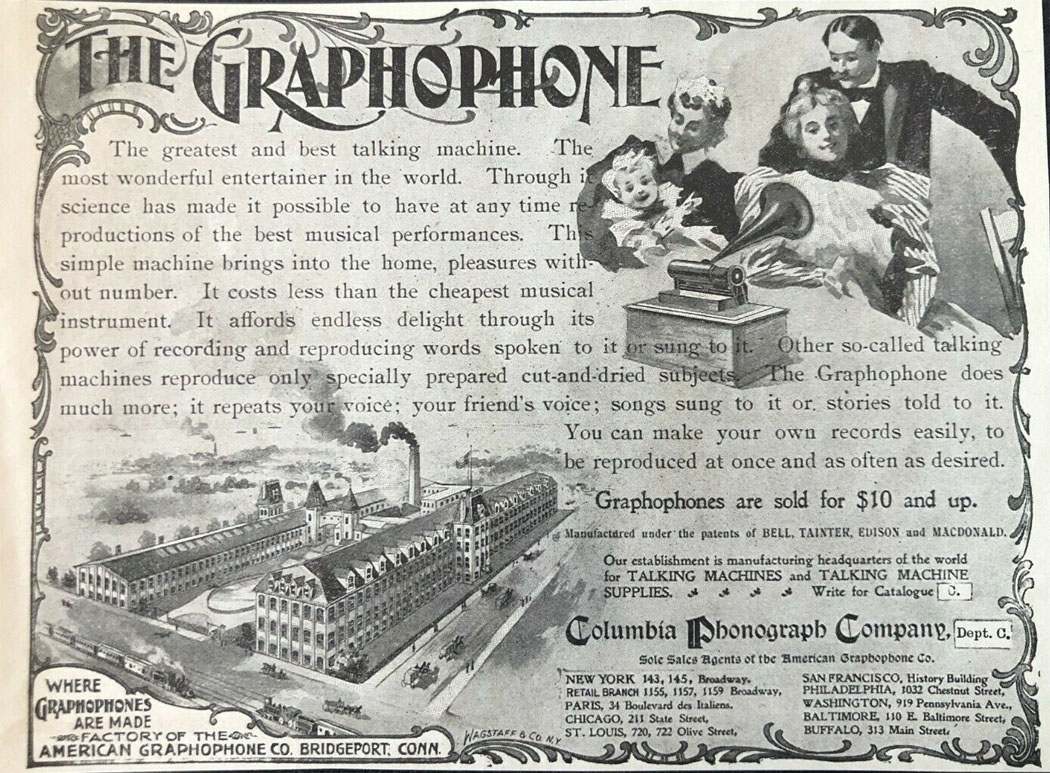
The Graphophone - Columbia
Phonograph Company, c.1900
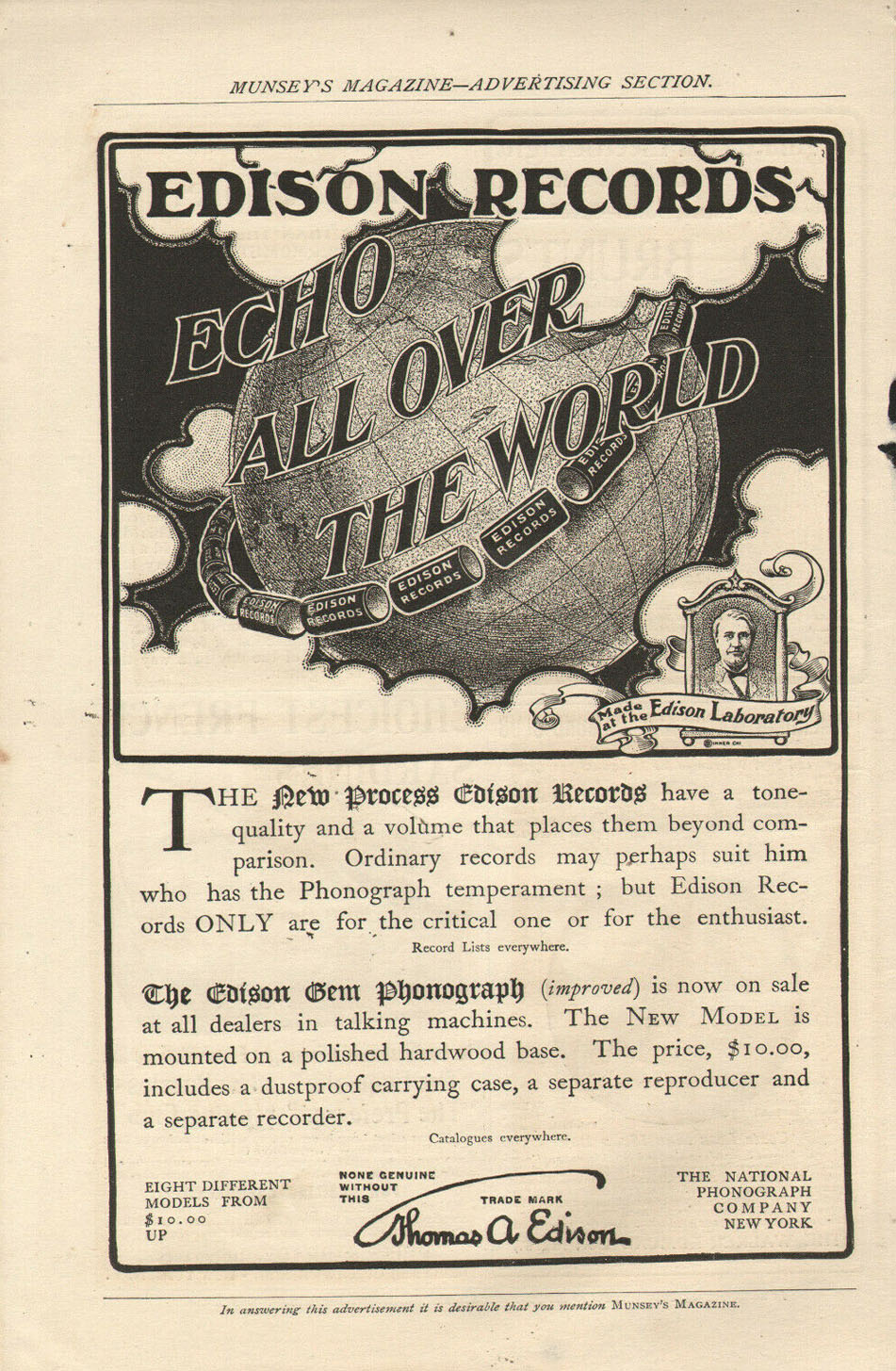
Munsey's Magazine,
1900 (PM-0936)
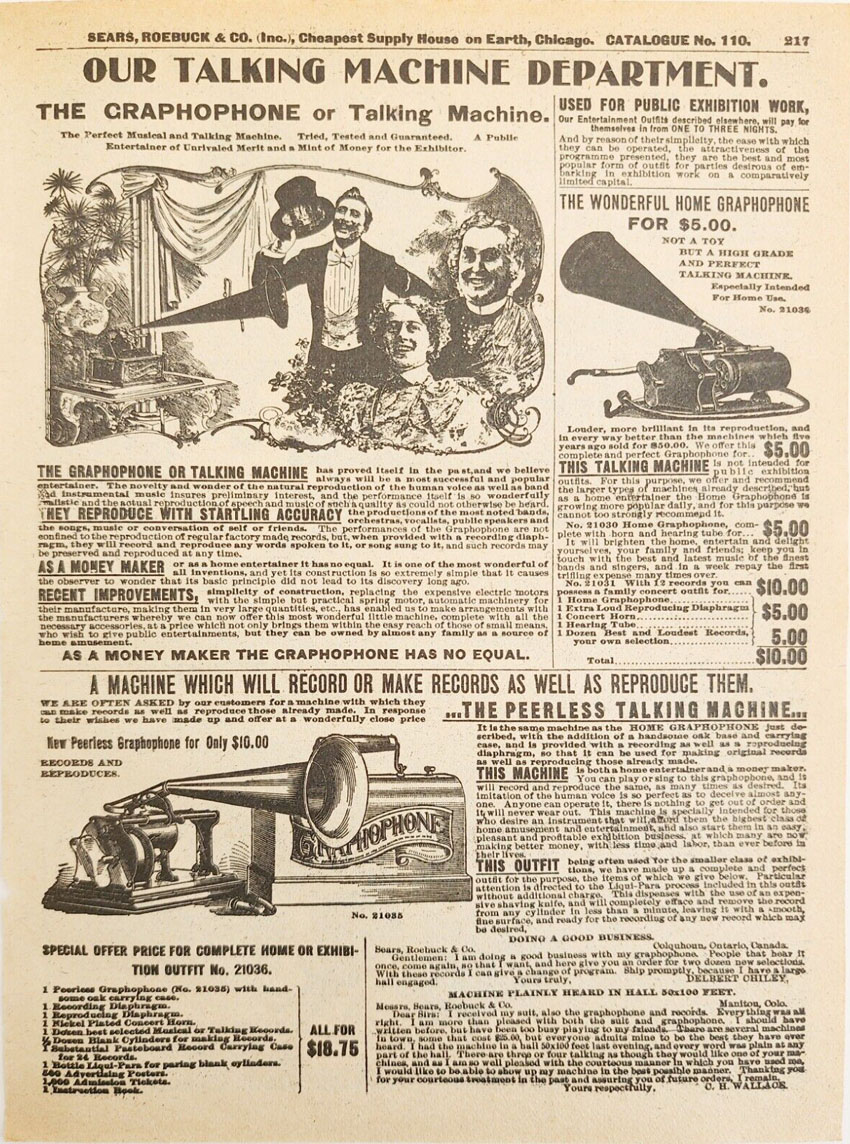
Sears
Catalogue, 1900

The
London Illustrated News, March 30, 1901
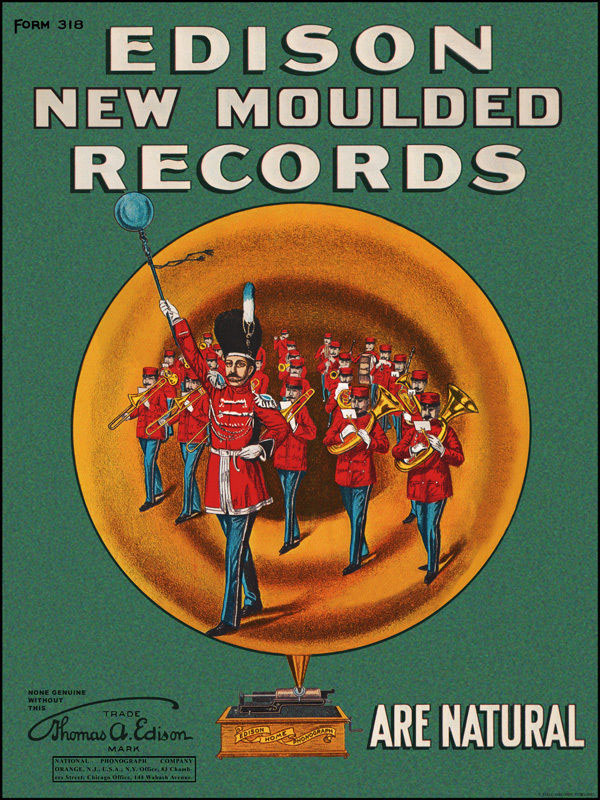
Edison Poster Form
318, c. 1901 (PM-1344)
.
The coin-in-the-slot machines offered
a variety of entertainment but few celebrity artists were part of
the musical repertoire. After 1900, however, the "Whole Range
of Music" began to be expand. The "great singers, players,
orchestras, entertainers of every sort" that had been generically
referenced in previous ads now had artist's names attached to respective
phonograph ads.
The "Joy" and the "Delight,"
and its "pure musical tones" could still be headlines
for an Edison ad. But the names and pictures of Caruso, Scotti,
Plancon, Sousa, Calve, Sembrich, Schumann-Heink, Camanari, Edouard
and Jean de Rezki, Adams, Gilibert, Tamango, and others were what
started to change the consumer perception of how wide that offering
of the "whole range of music" might really be.
In 1903 a Columbia Phonograph announced
"Grand Opera on Talking Machines in your own Home" calling
it "a most extraordinary achievement marking an epoch in
the art of recording and reproducing sound: For the first time in
the history of the Talking Machine Art successful records have been
made of the voices of the world- renowned singers."
.
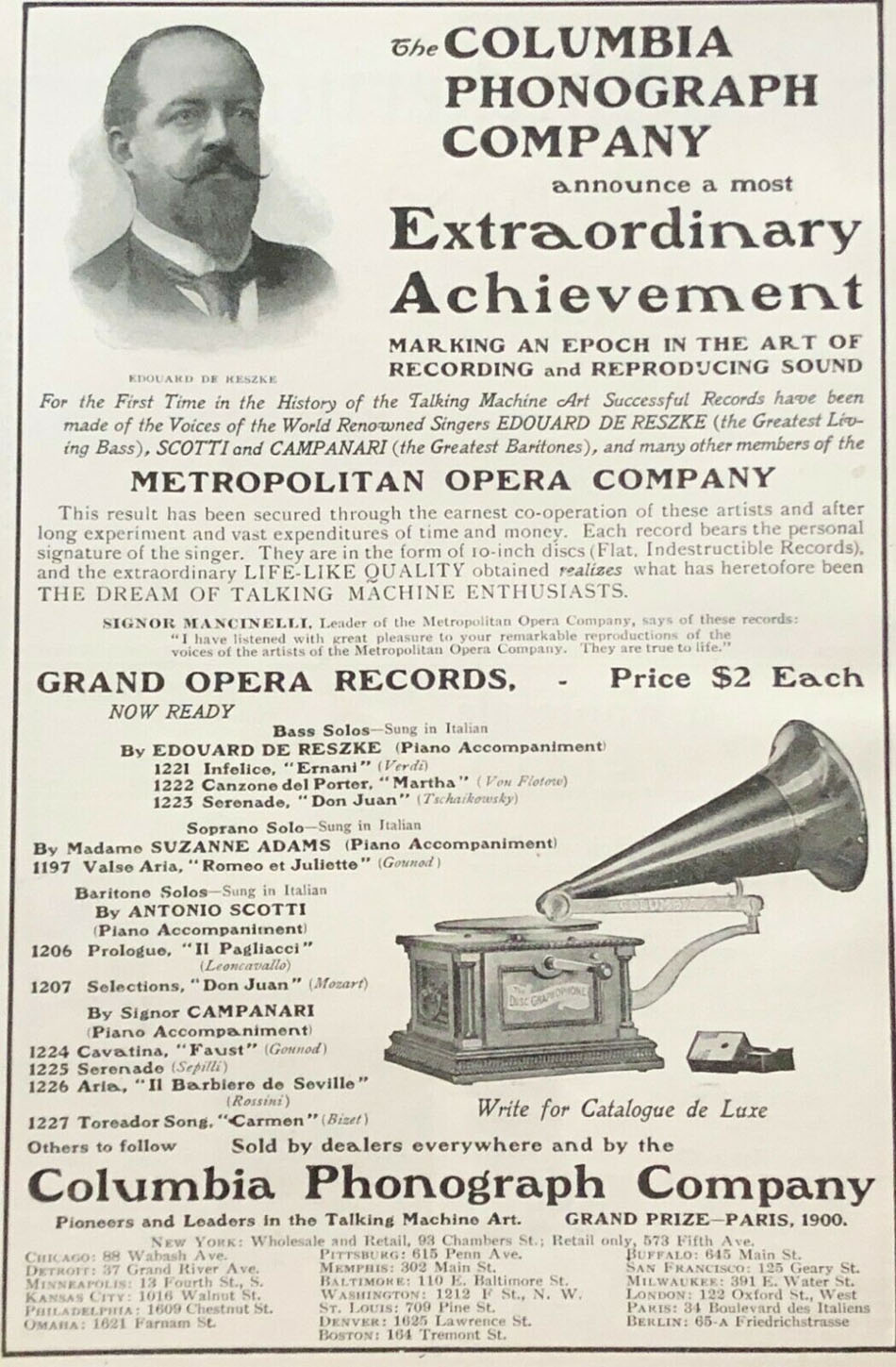
Grand Opera Records by
members of the Metropolitan Opera Company, Harper's Magazine,
April 1903
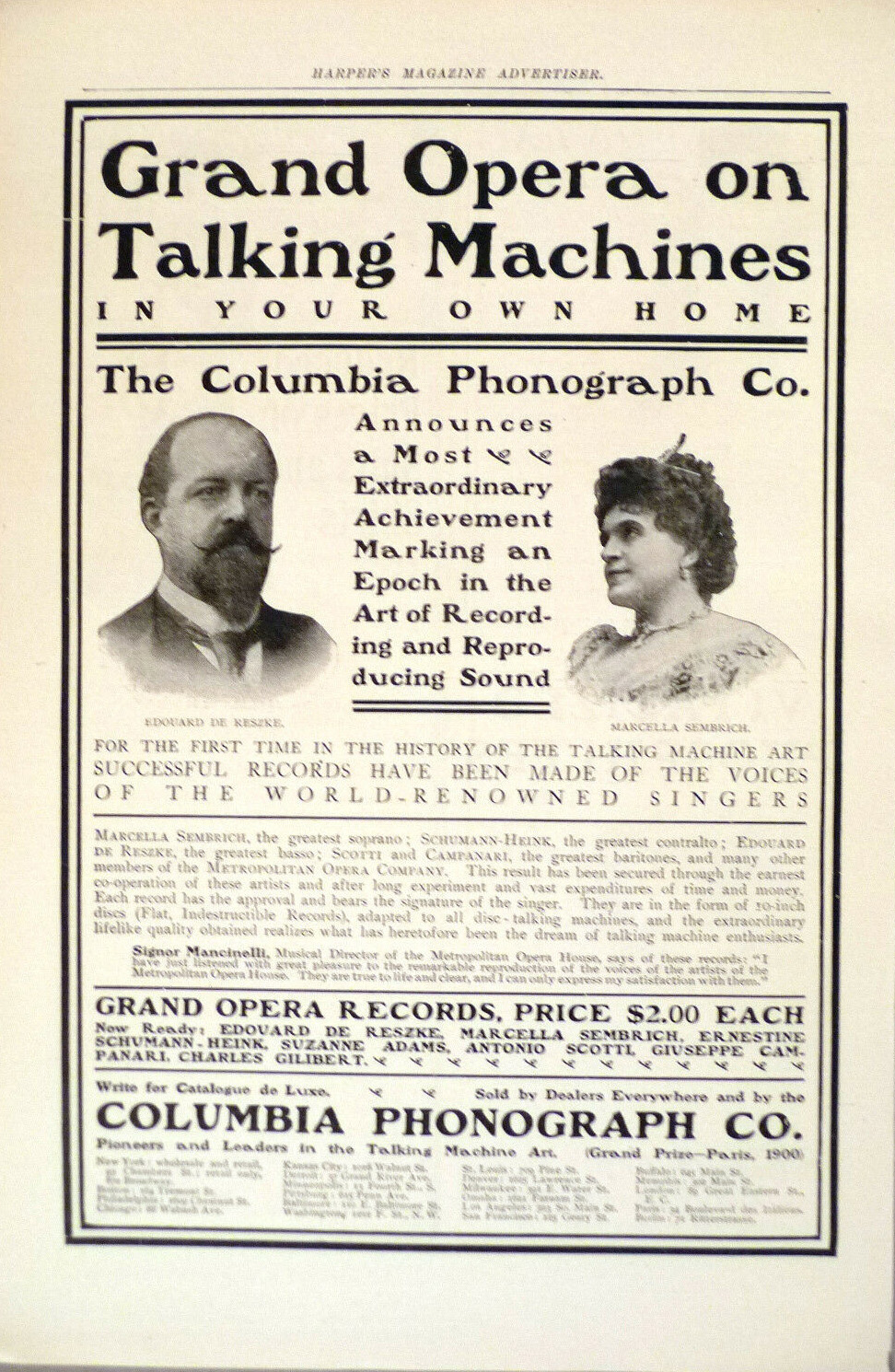
1903
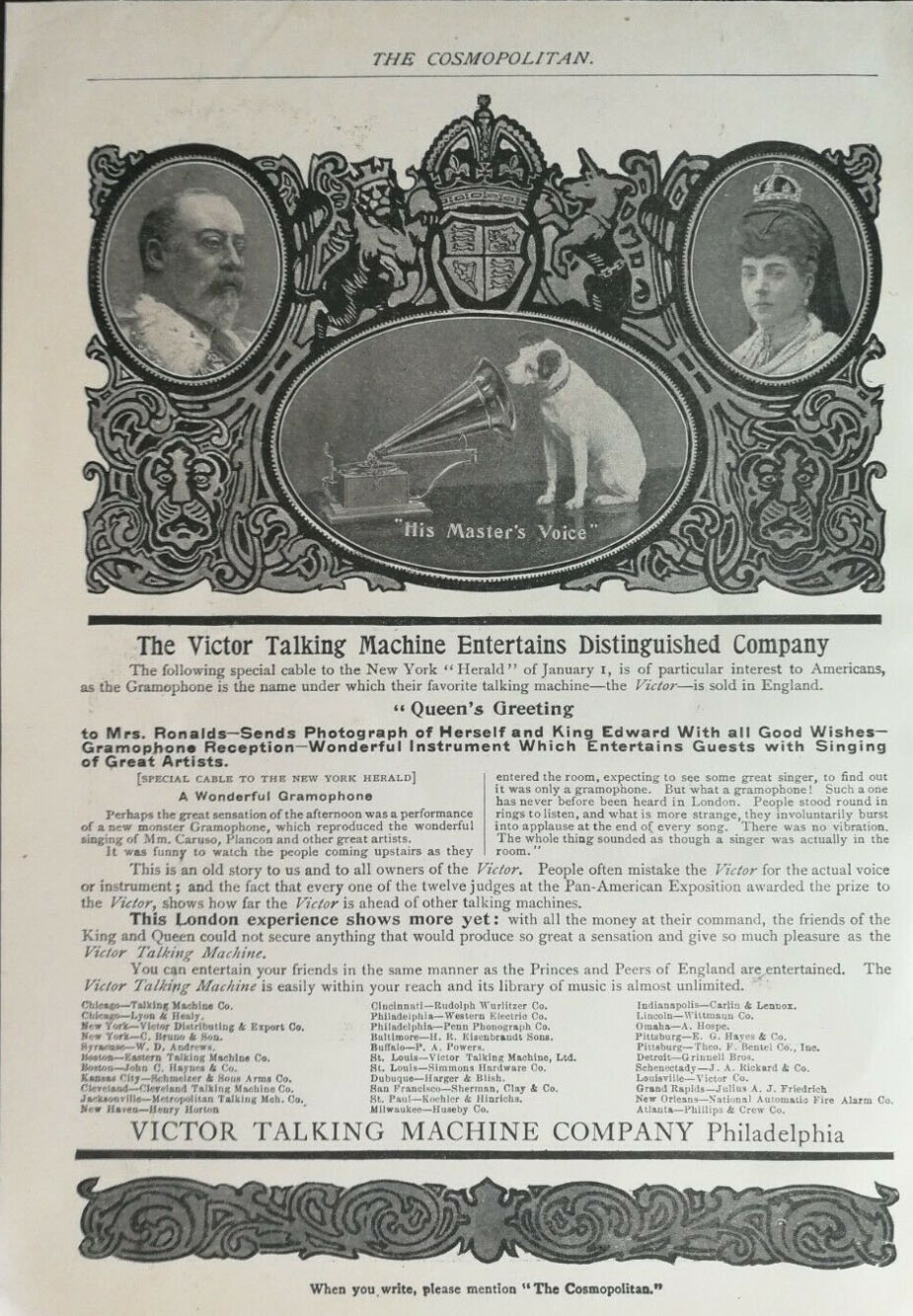
King Edward and Queen's
Greeting, The Cosmopolitan, 1903

Munsey's Magazine,
August 1903, 4" x 5 1/2"
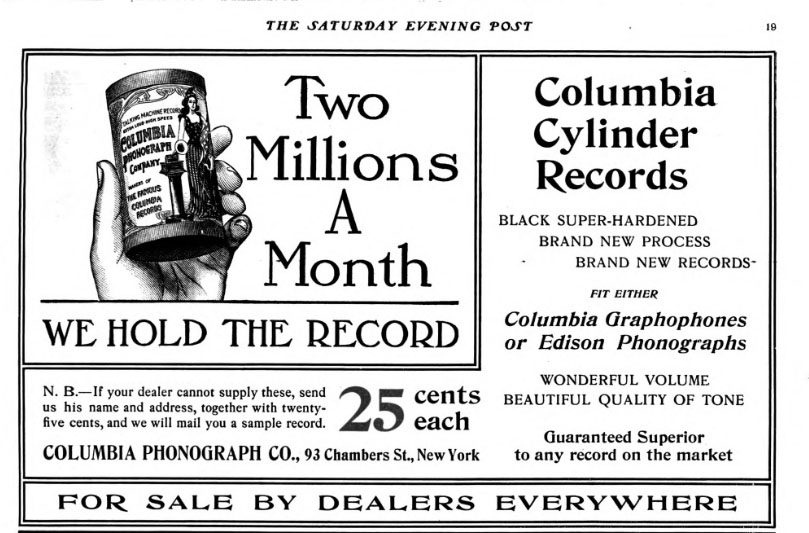
The Saturday Evening
Post, December 19, 1903
It technically was not
the first time in history for renowned singers to be recorded since
Gianni Bettini and others had recorded famous opera stars in the 1890's
and in 1898 Bettini had even published a record catalogue that included
twelve pages of famous artist offerings. But once Columbia, Victor
and Edison started making records in the early 1900's the 'world-renowned
singers' referenced in national magazine ads started to change the
consumer conversation regarding the scope of home entertainment.
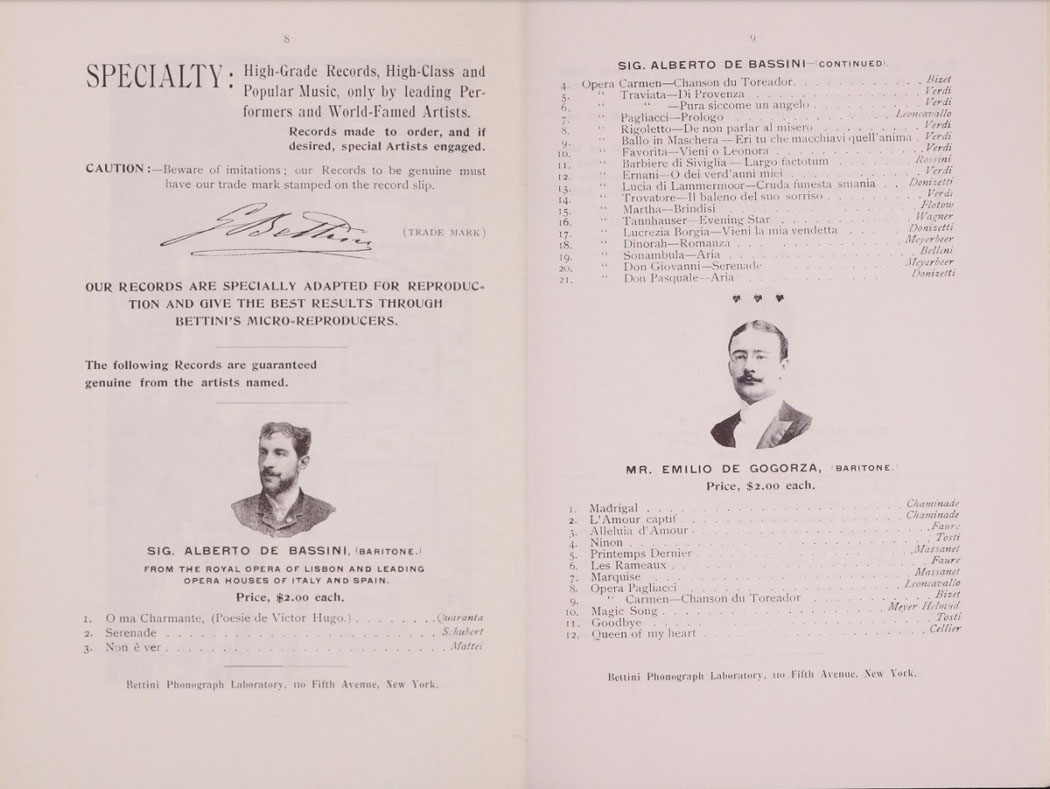
.

Bettini 1898 Catalog
with Specialty Records by famous artists pp.8-9 and 18-19 Courtesy
Stanford University Libraries (3)
.
In 1904 the first
full page advertisement by Victor devoted to a single artist,
Enrico Caruso, was published following his 'exclusive contract"
that he signed with Victor. It signaled a new era for many of the
greatest singers of the world to also become recording artists.
On the other hand, Edison's ads were
for a machine that was said to bring delight, pleasure and the "faithful
reproduction of sound" for all lovers of music but with few
advertising references to actual opera recording stars.
The following ads from 1900-1905 show
this mix of celebrated artists and the more general approach of
emphasizing the pleasure and delight this machine could bring to
the home.
During this time the talking machine
also began to be called in advertisements "a perfect
musical instrument."
The Cosmopolitan,
1901 (PM-0968)
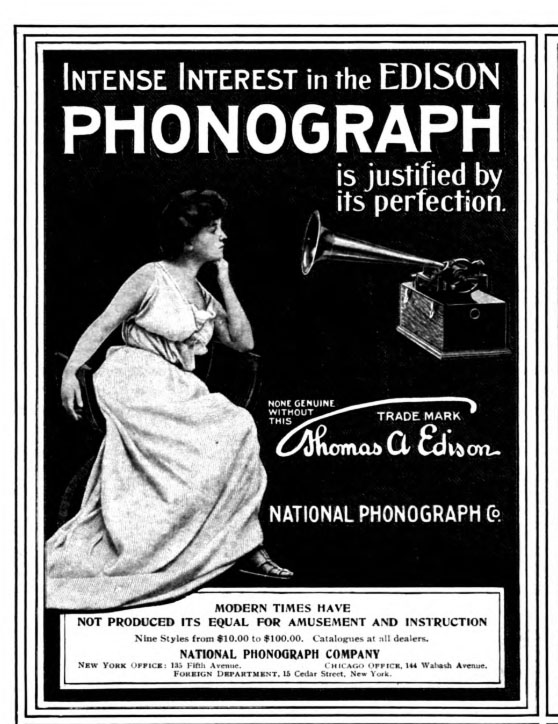
Edison ad, 1901
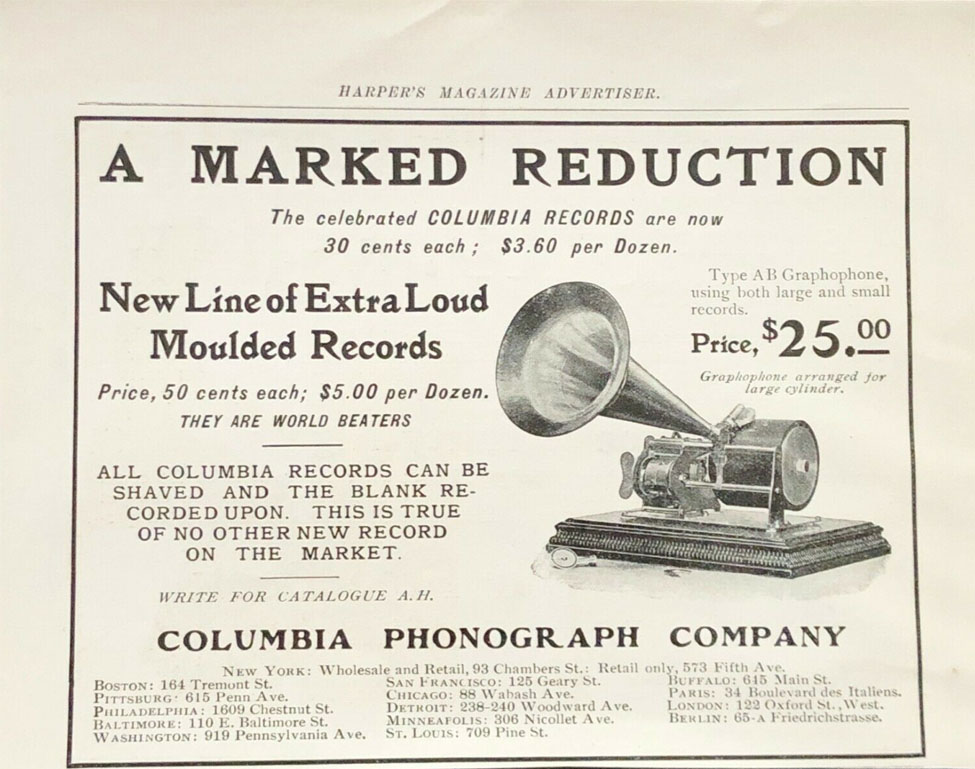
Harper's Magazine,
April 1902
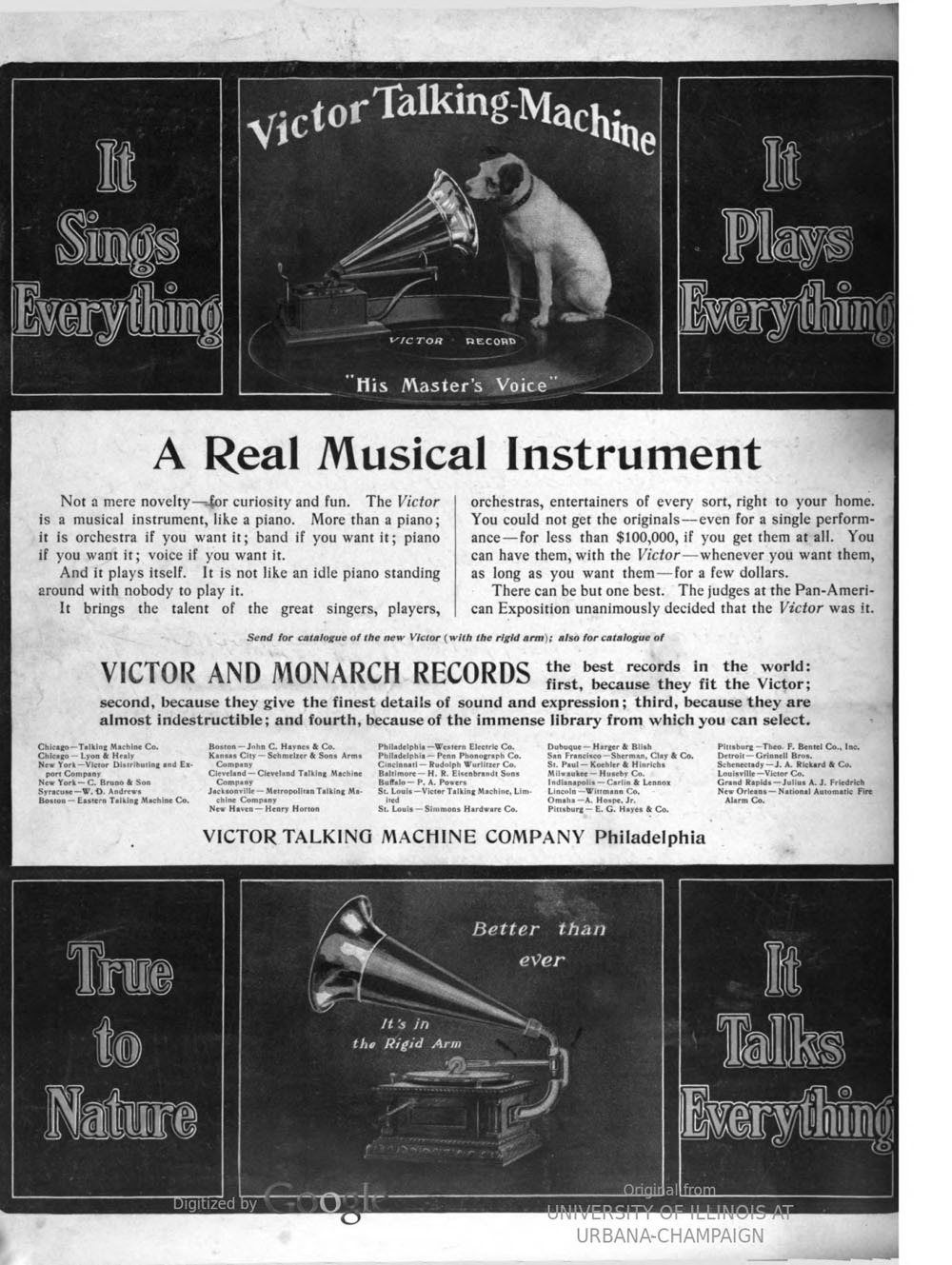
"You could not get
the originals -- even for a single performance - for less than $100,000..."
The Saturday Evening Post, January 31, 1903
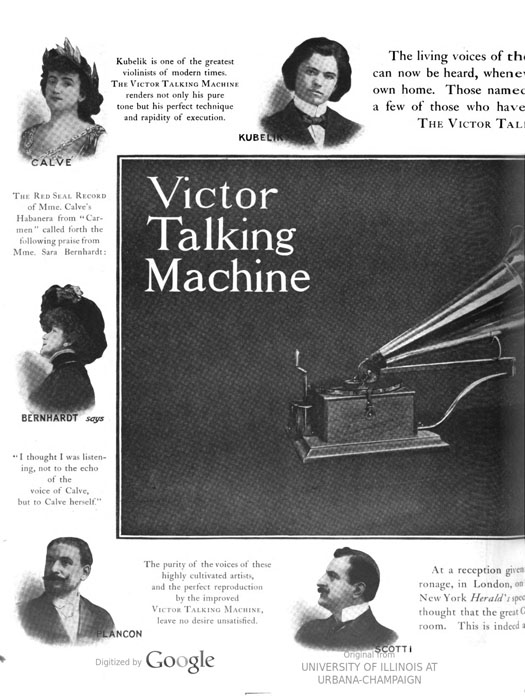 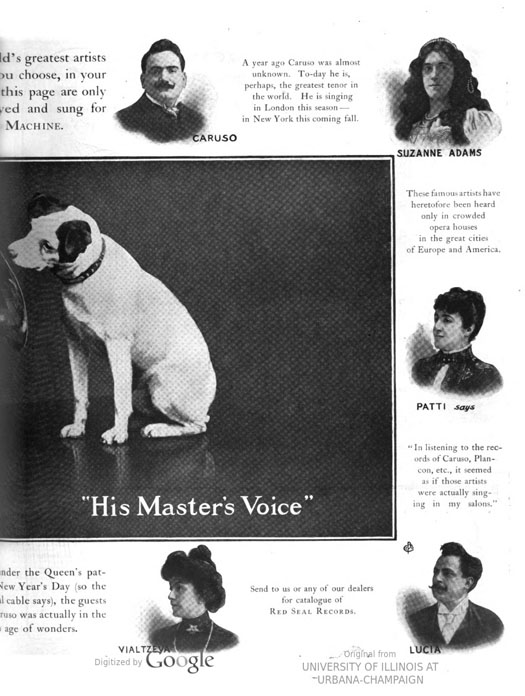
The Saturday Evening
Post, April 25, 1903
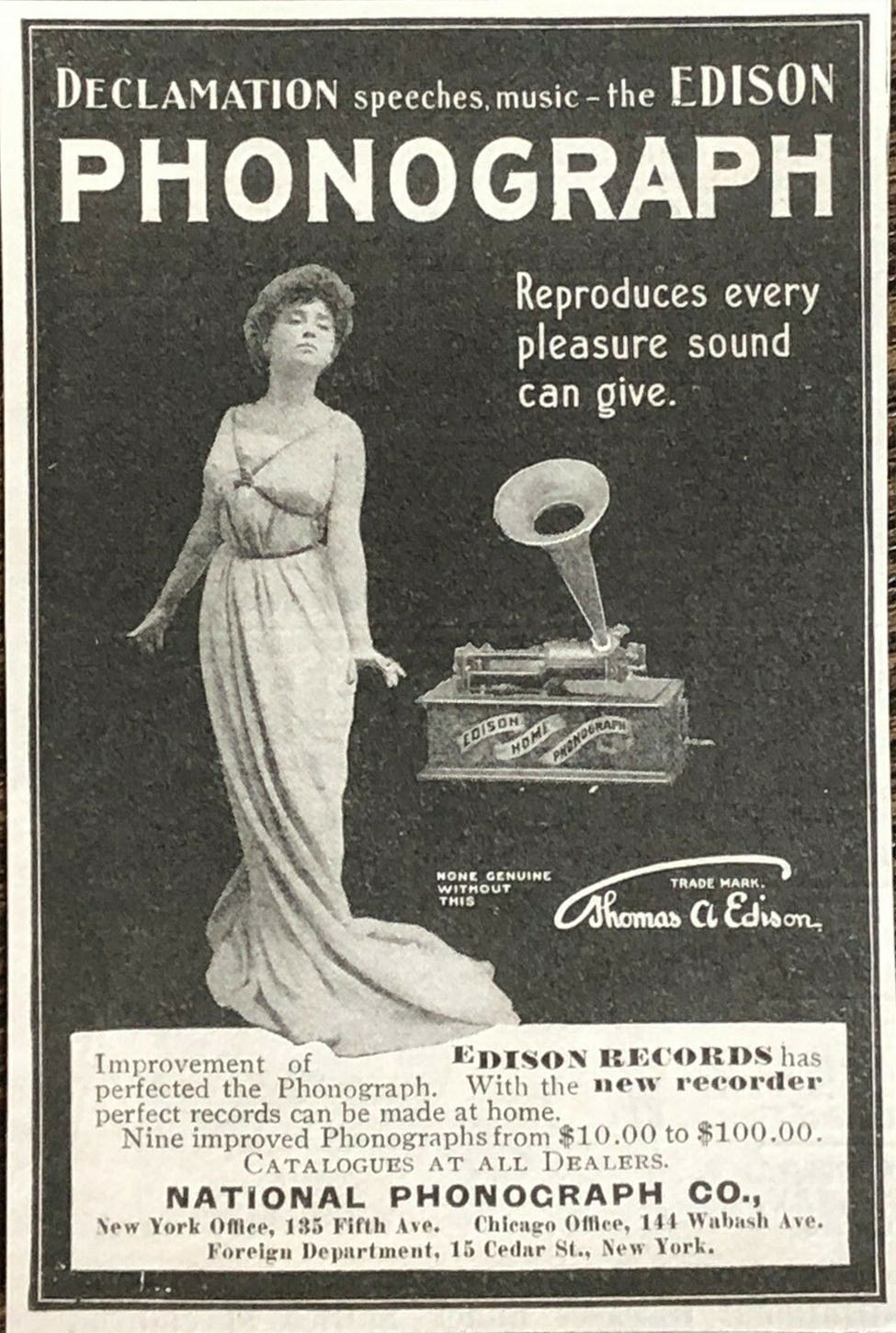
Edison Ad, Munsey's
magazine, January 1902
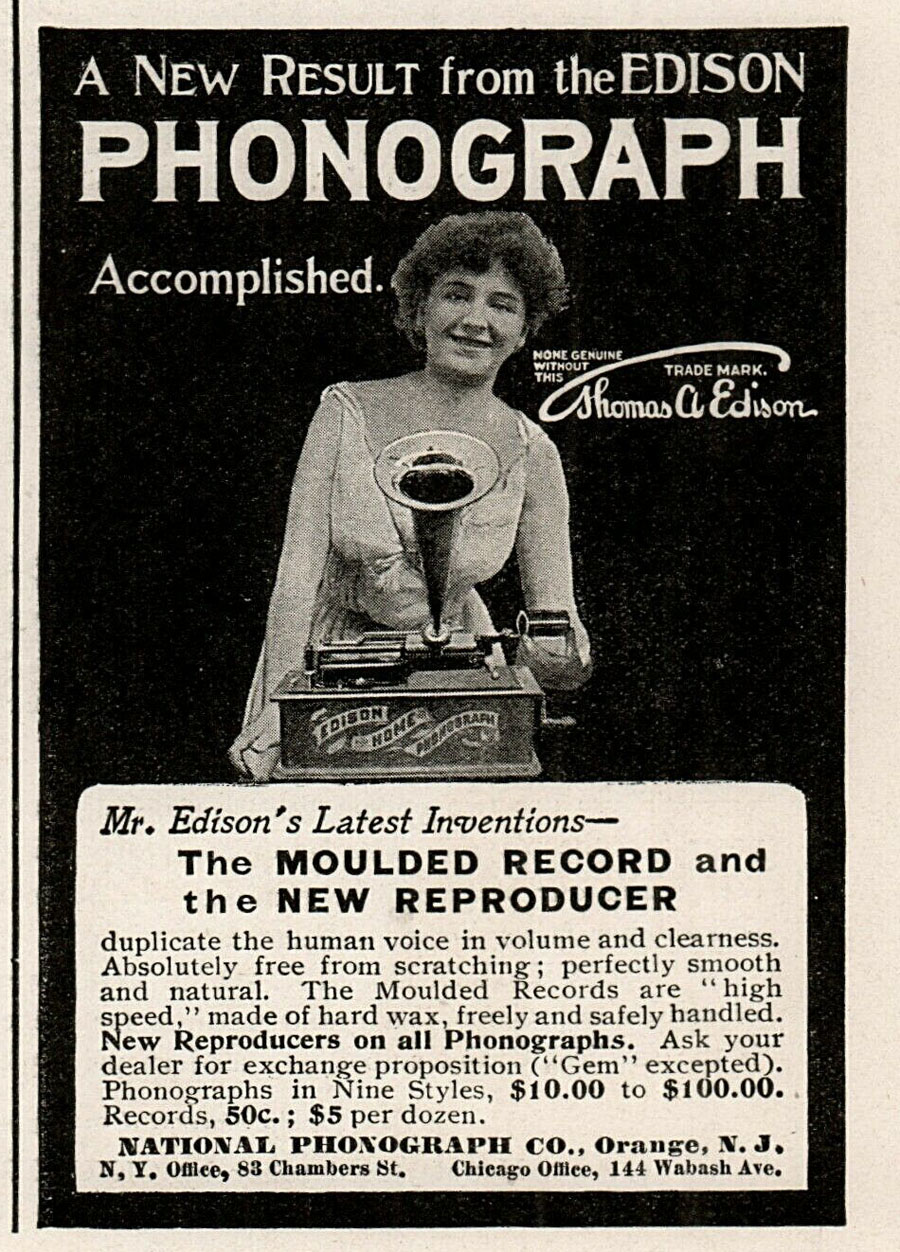
Edison ad, 1902
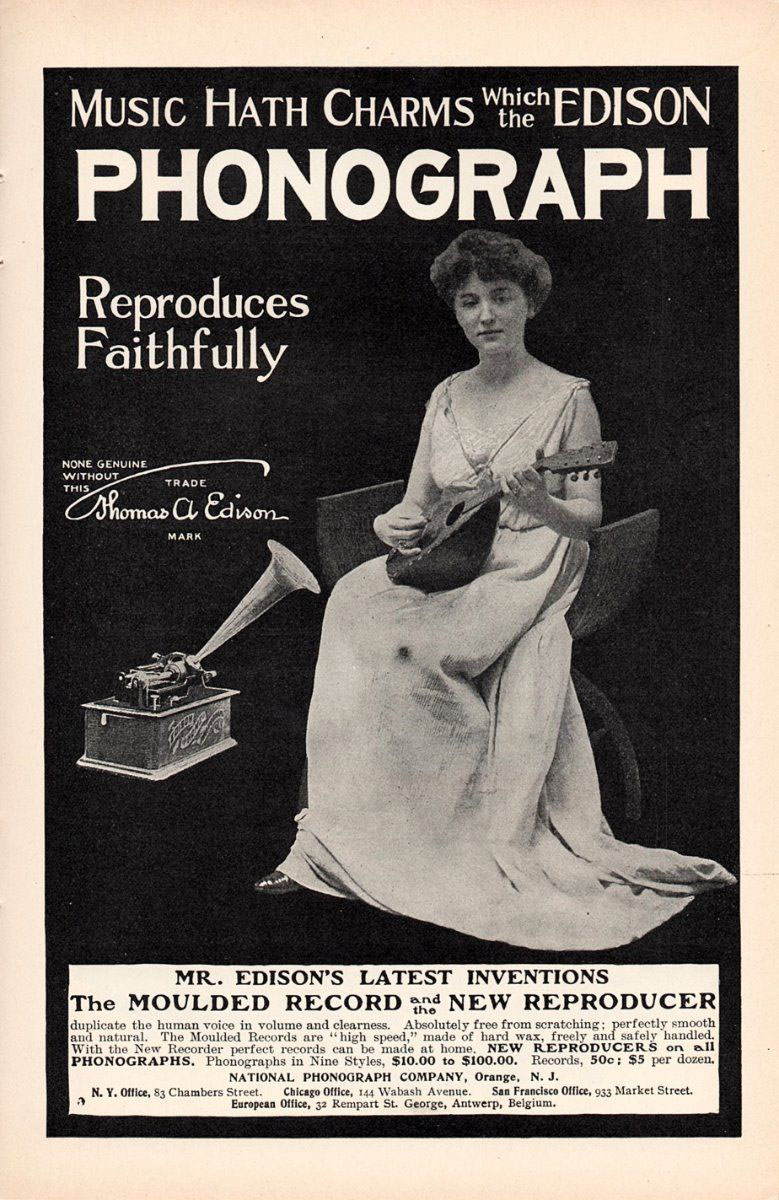
"Music Hath Charms"
1902
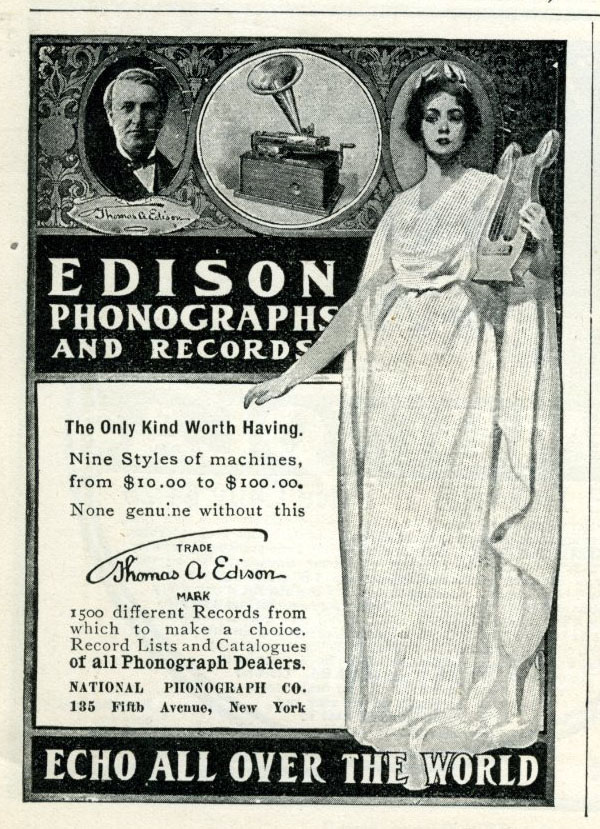
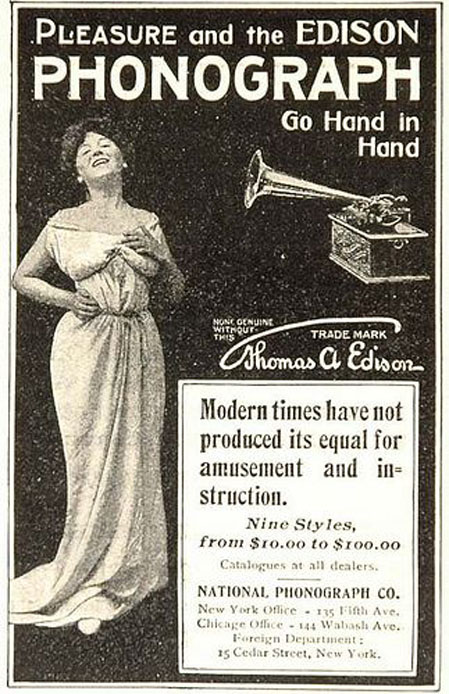
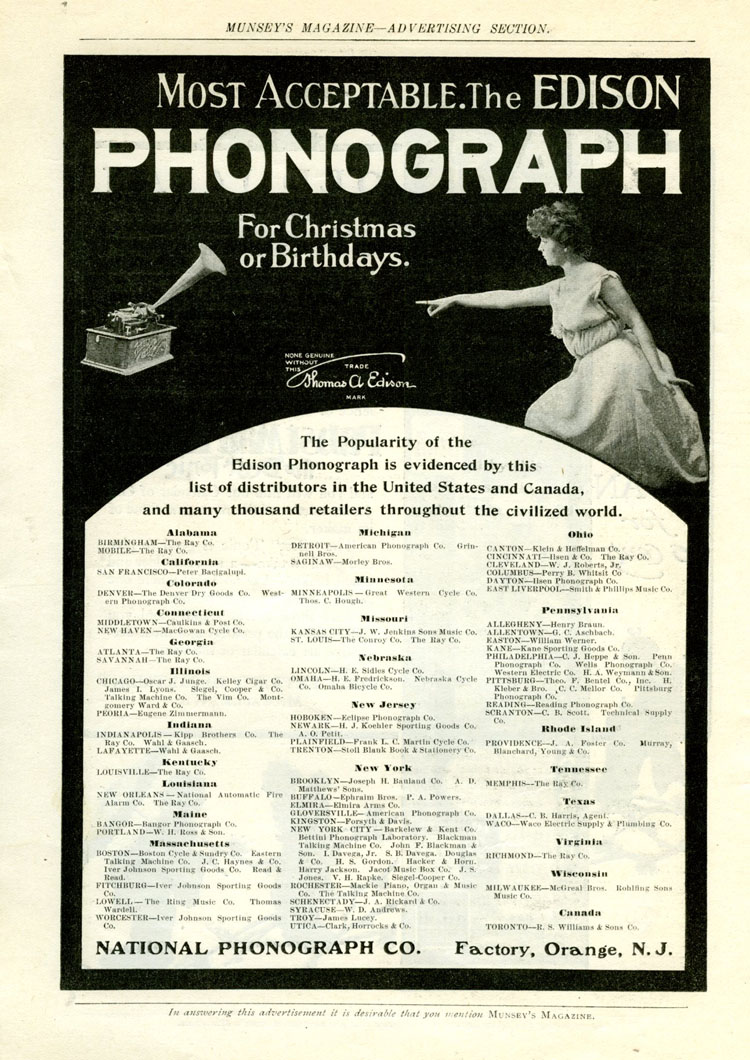
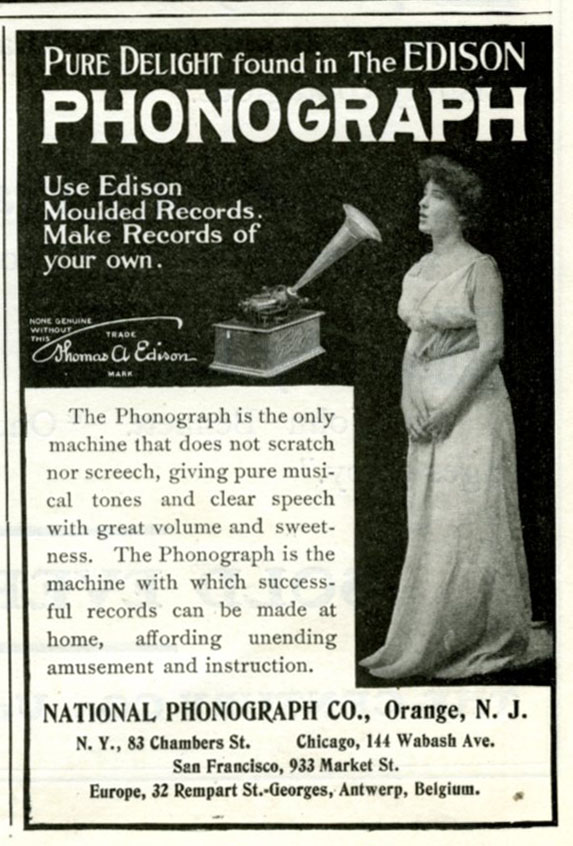
March 1903 - See
variation used in another Edison ad in The Saturday Evening
Post, March 28, 1903
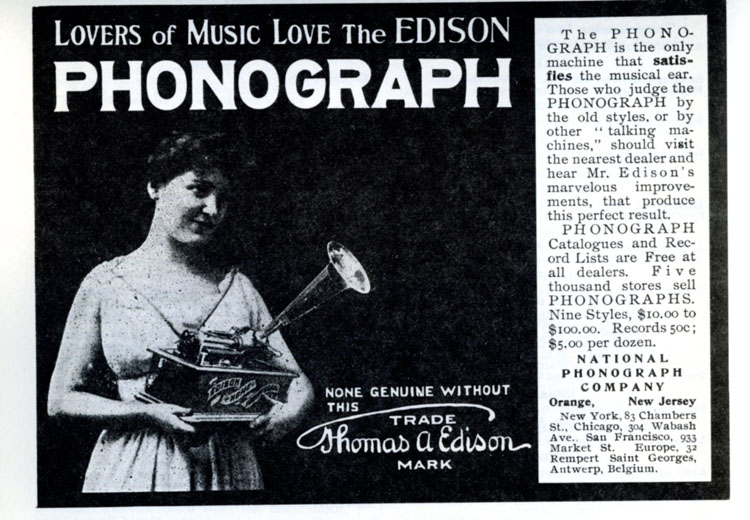
April 1903
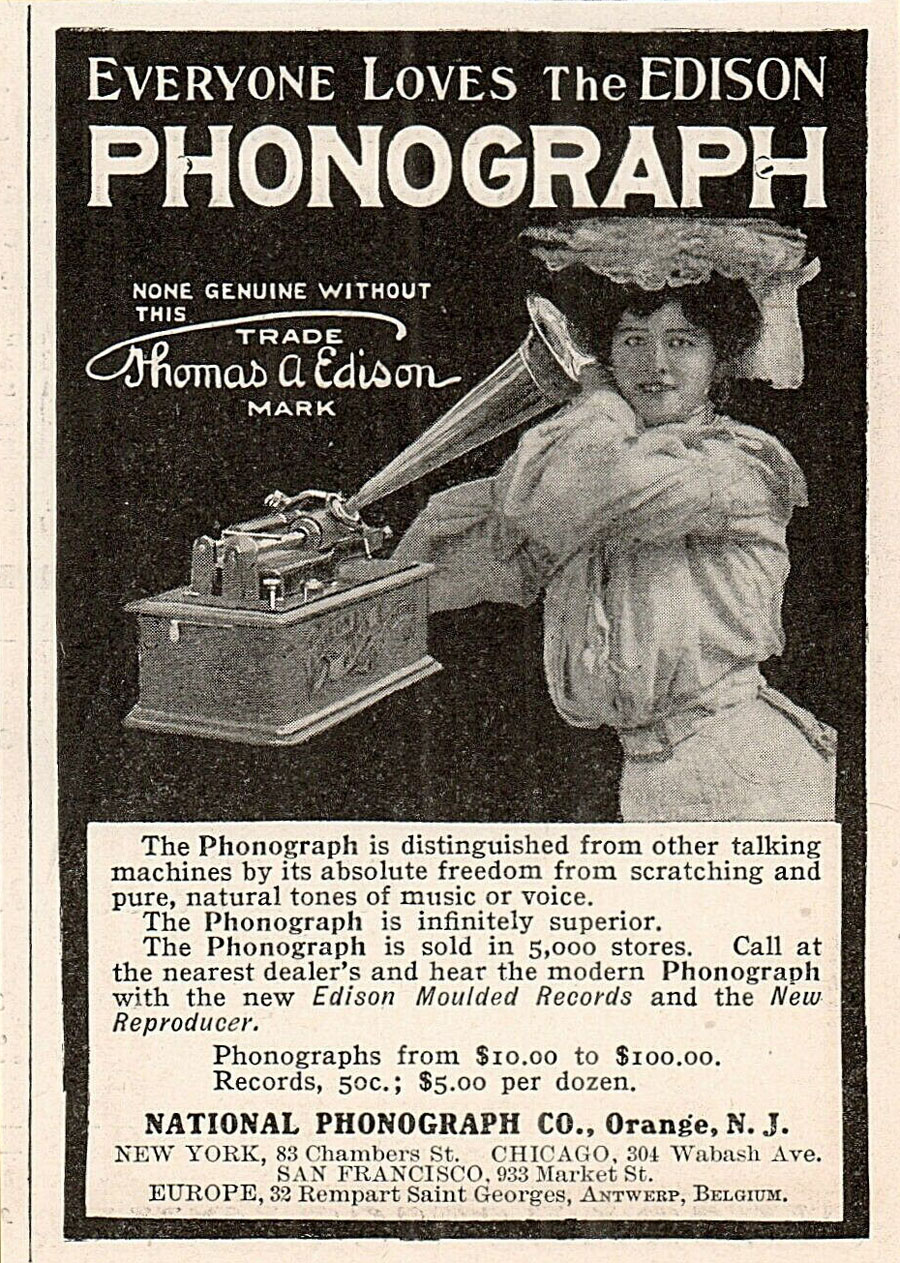
June 1903
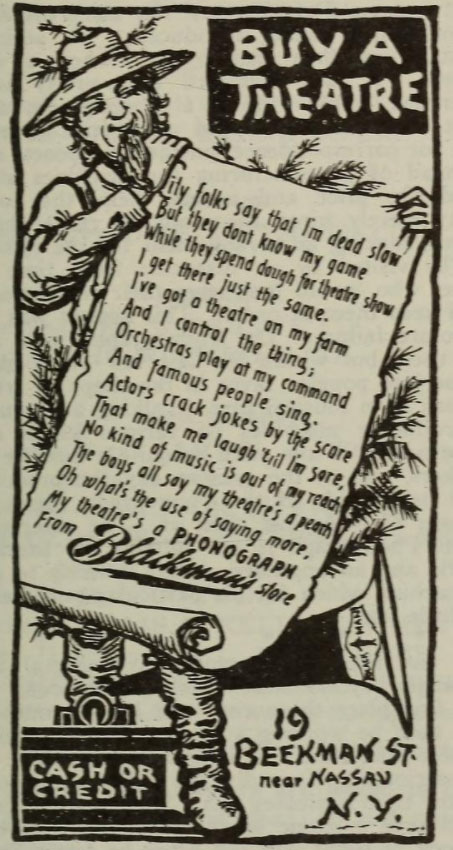
The Edison Phonograph
Monthly, June 1903
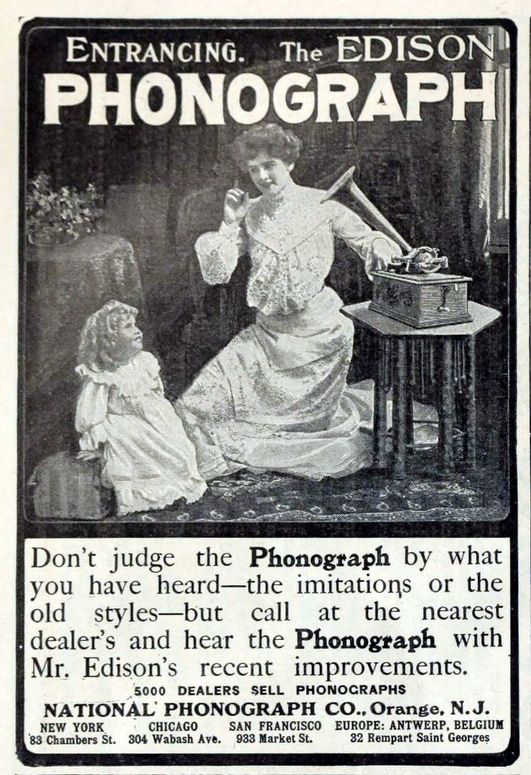
Here's what the July
1903 edition of The Edison Phonograph Monthly had to say
about their July "Entrancing" advertisement and where
it was appearing:
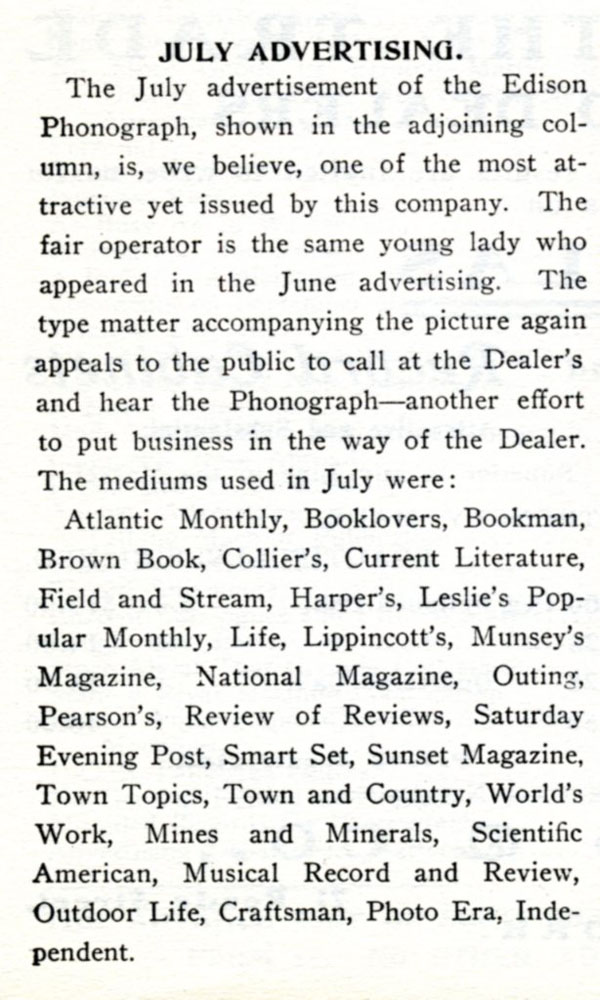
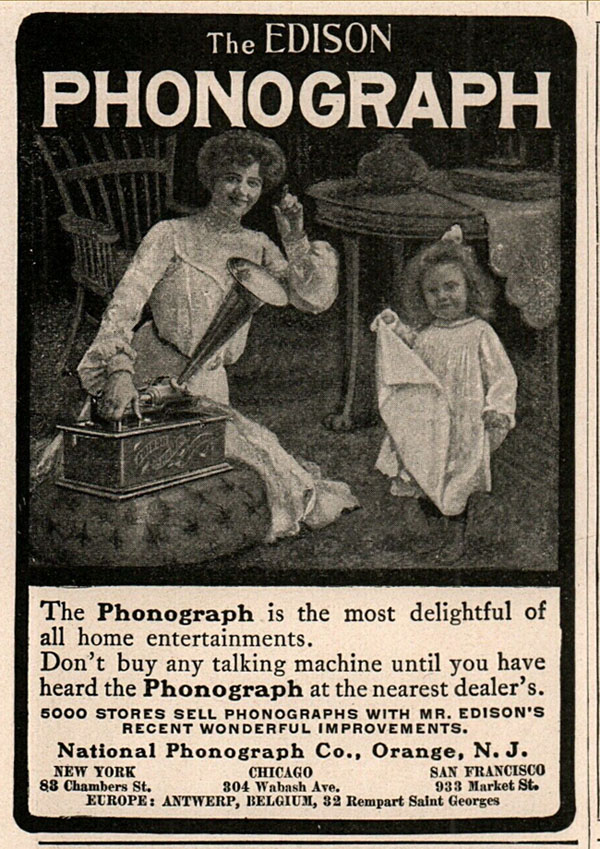
The Saturday Evening
Post, July 18, September 19, October 24, 1903 (1/12 page ad)
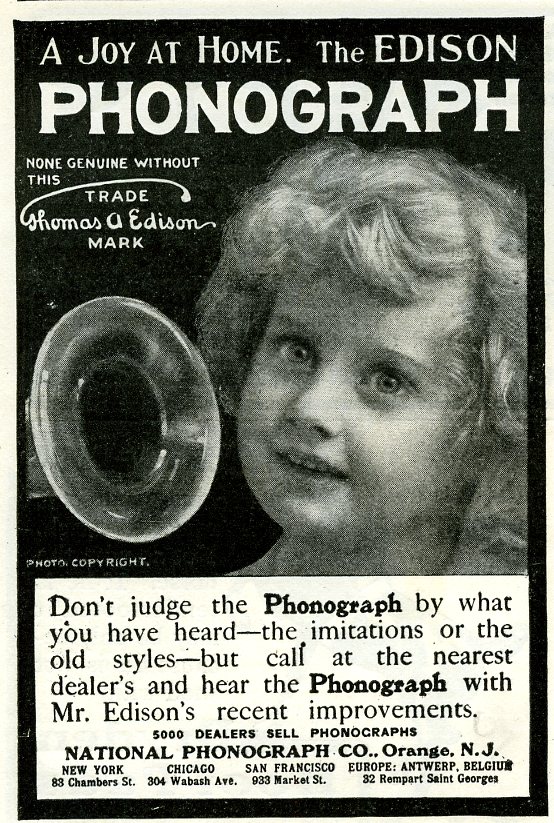
The Saturday Evening
Post, November 21, 1903 (1/12 page ad)
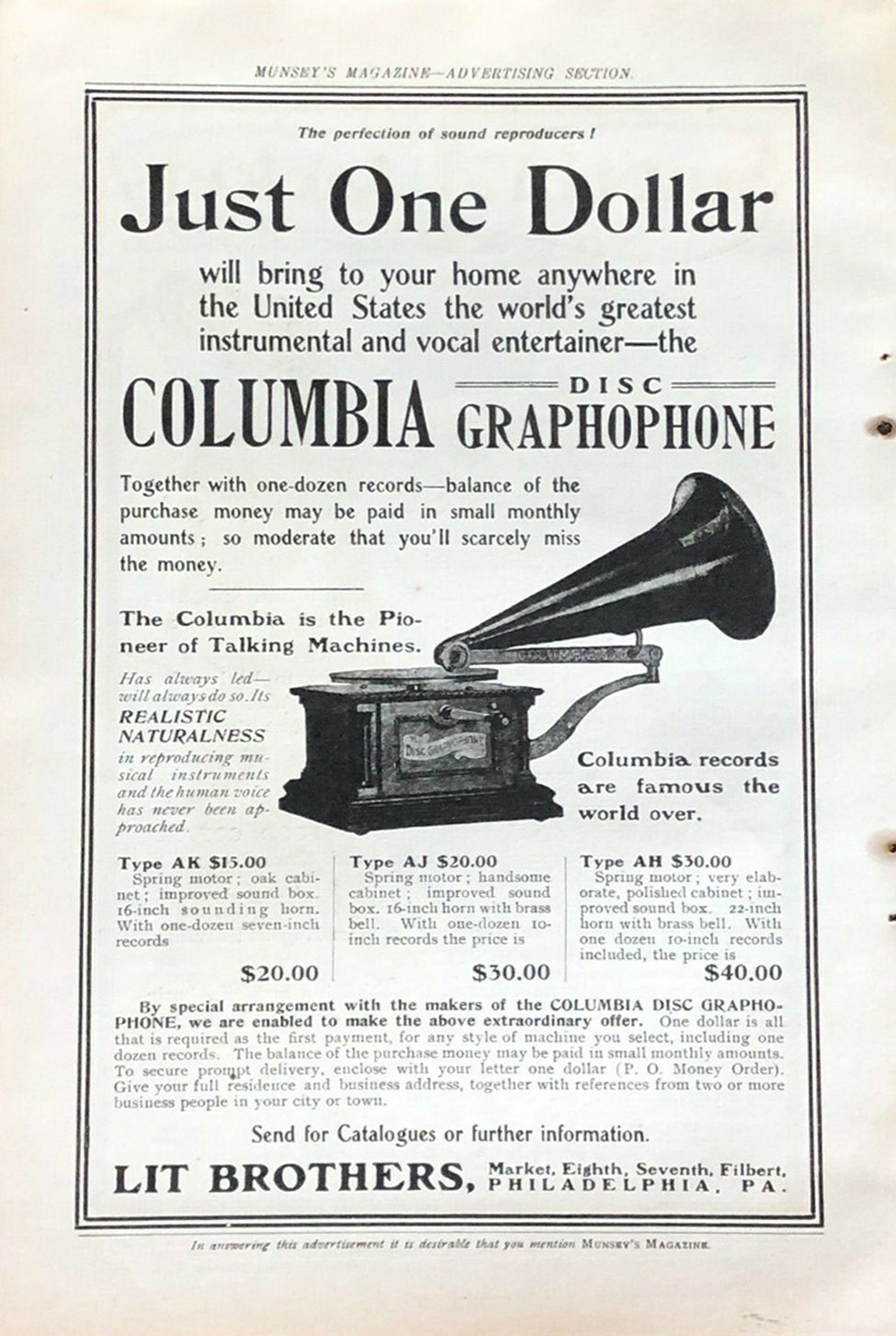
Munsey's Magazine,
November 1903
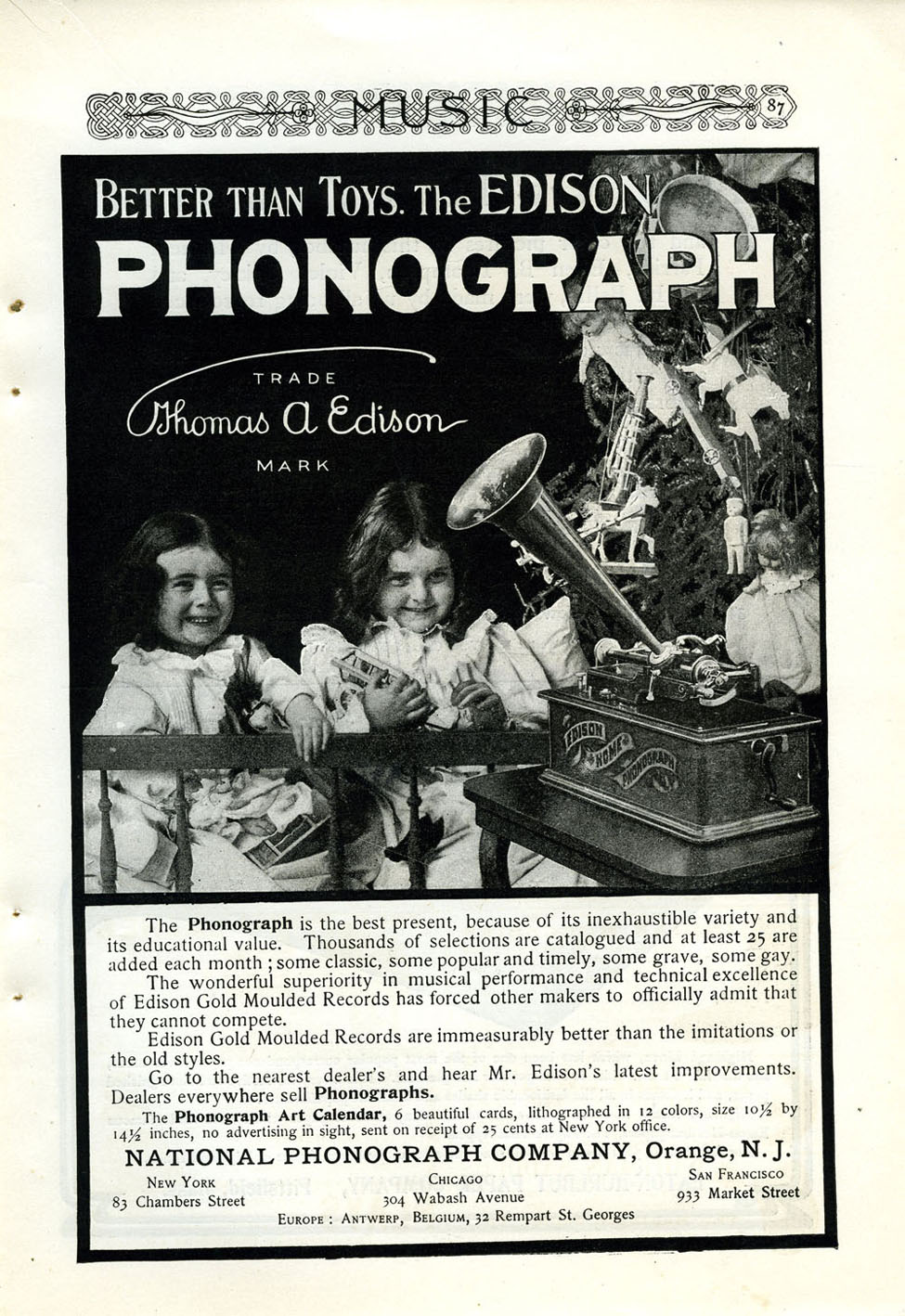
(Also, 1/12 page
ad in The Saturday Evening Post, December 5, 1903) (PM-0882)
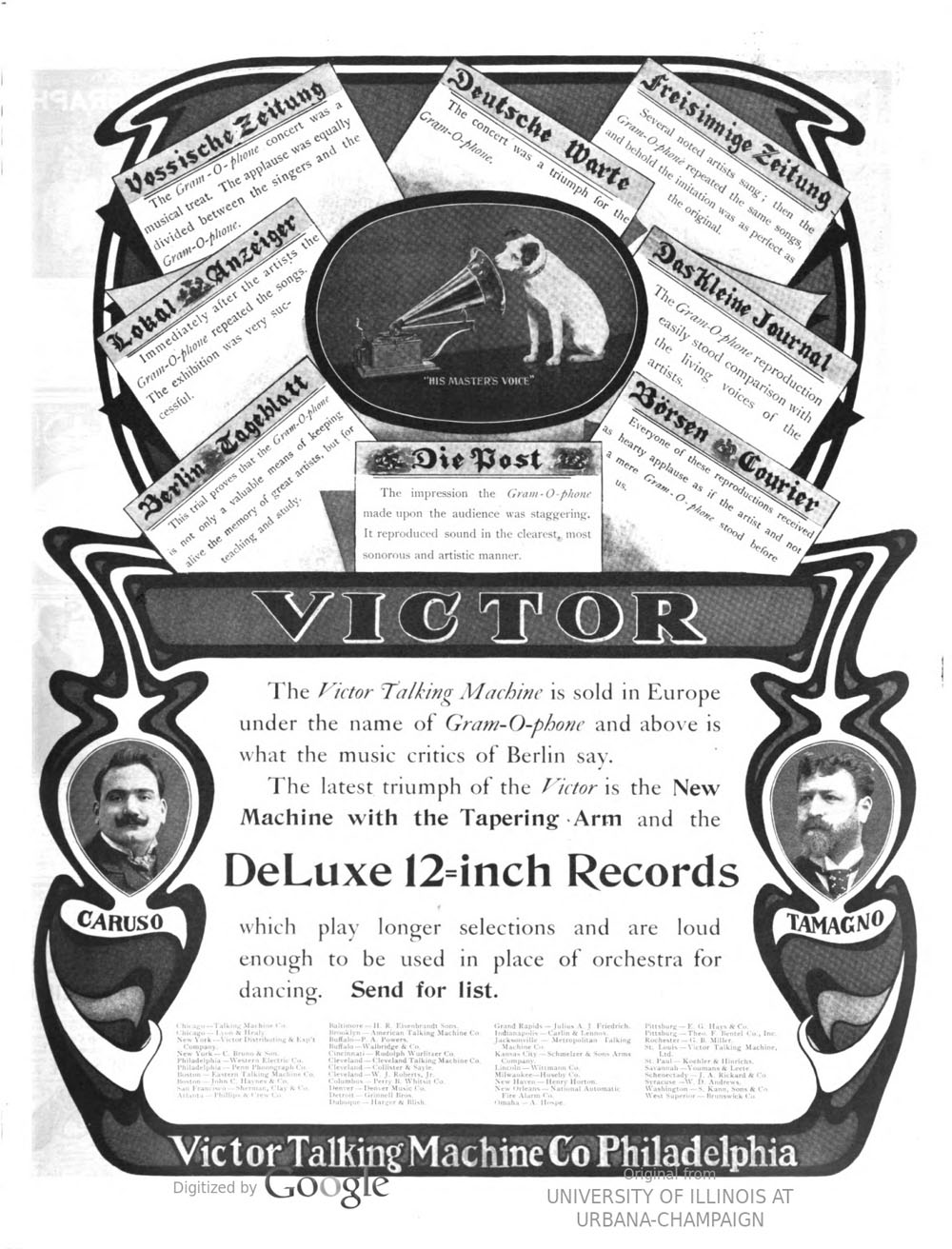
"Several
noted artists sang; then the Gram-O-Phone repeated the same songs,
and behold the imitation was as perfect as the original." The
Saturday Evening Post, October 24, 1903 - pictures of Caruso
and Tamagno
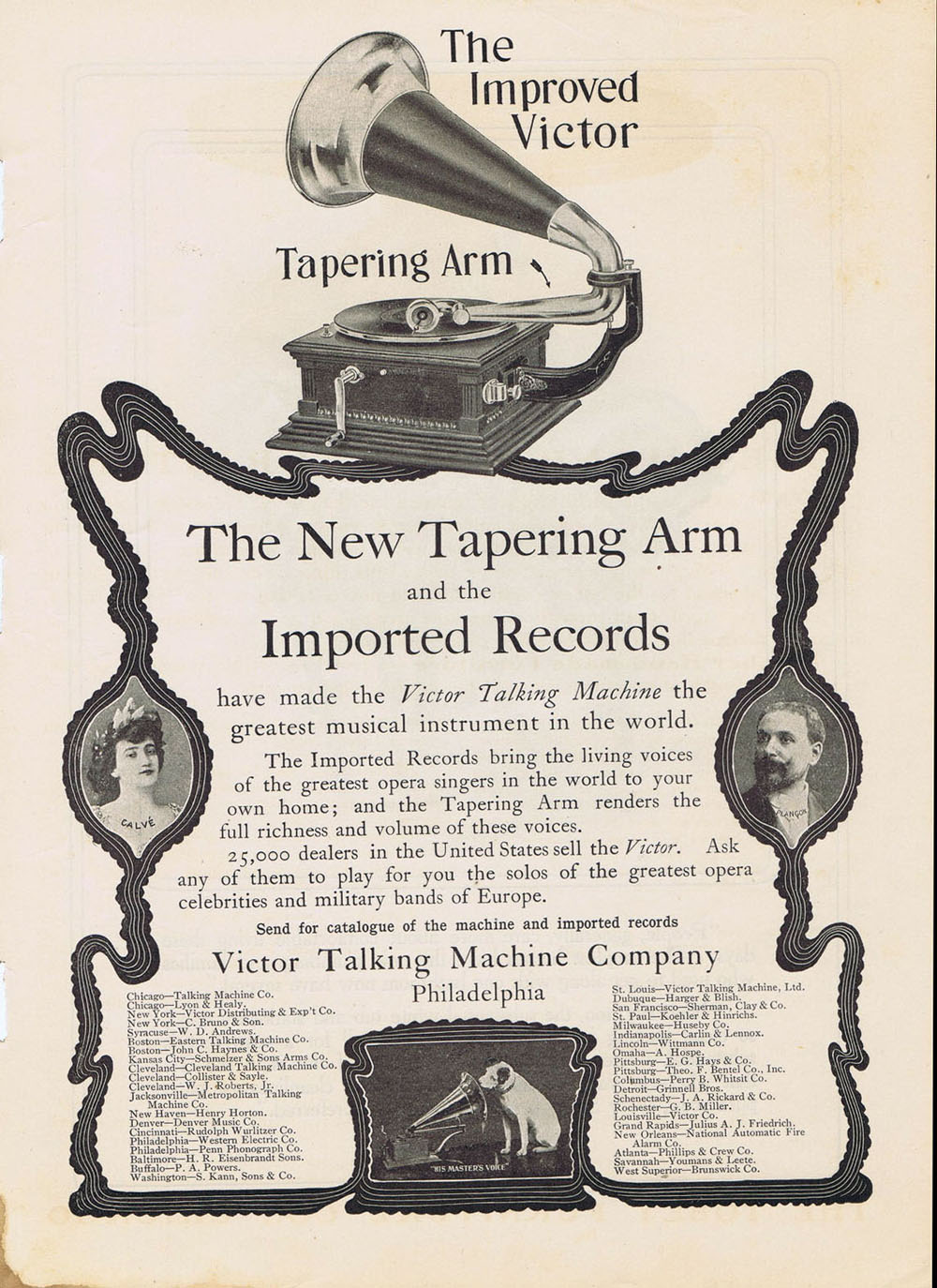
1903 Victor Imported
Records - pictures of Calve and Plangon
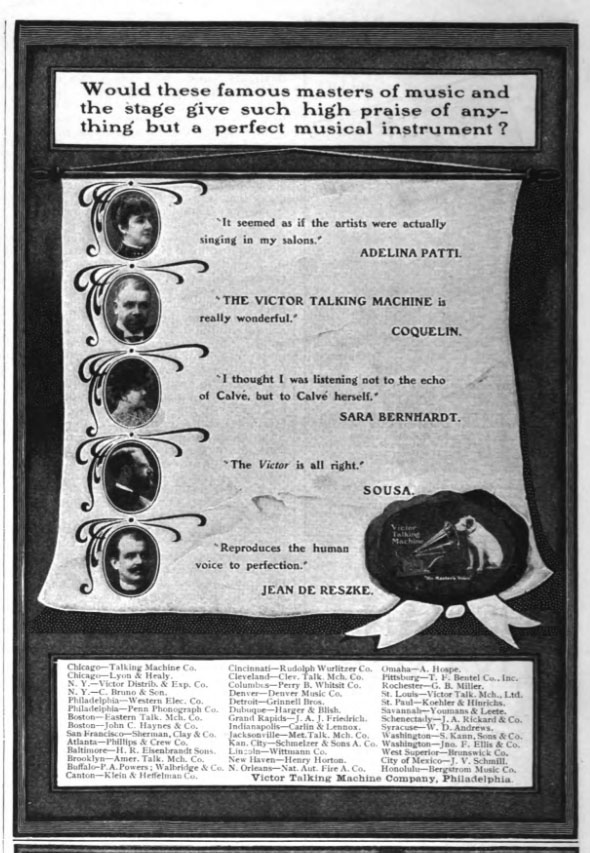
"A Perfect musical instrument."
The Saturday Evening Post, January 30, 1904 (1/4 page ad)
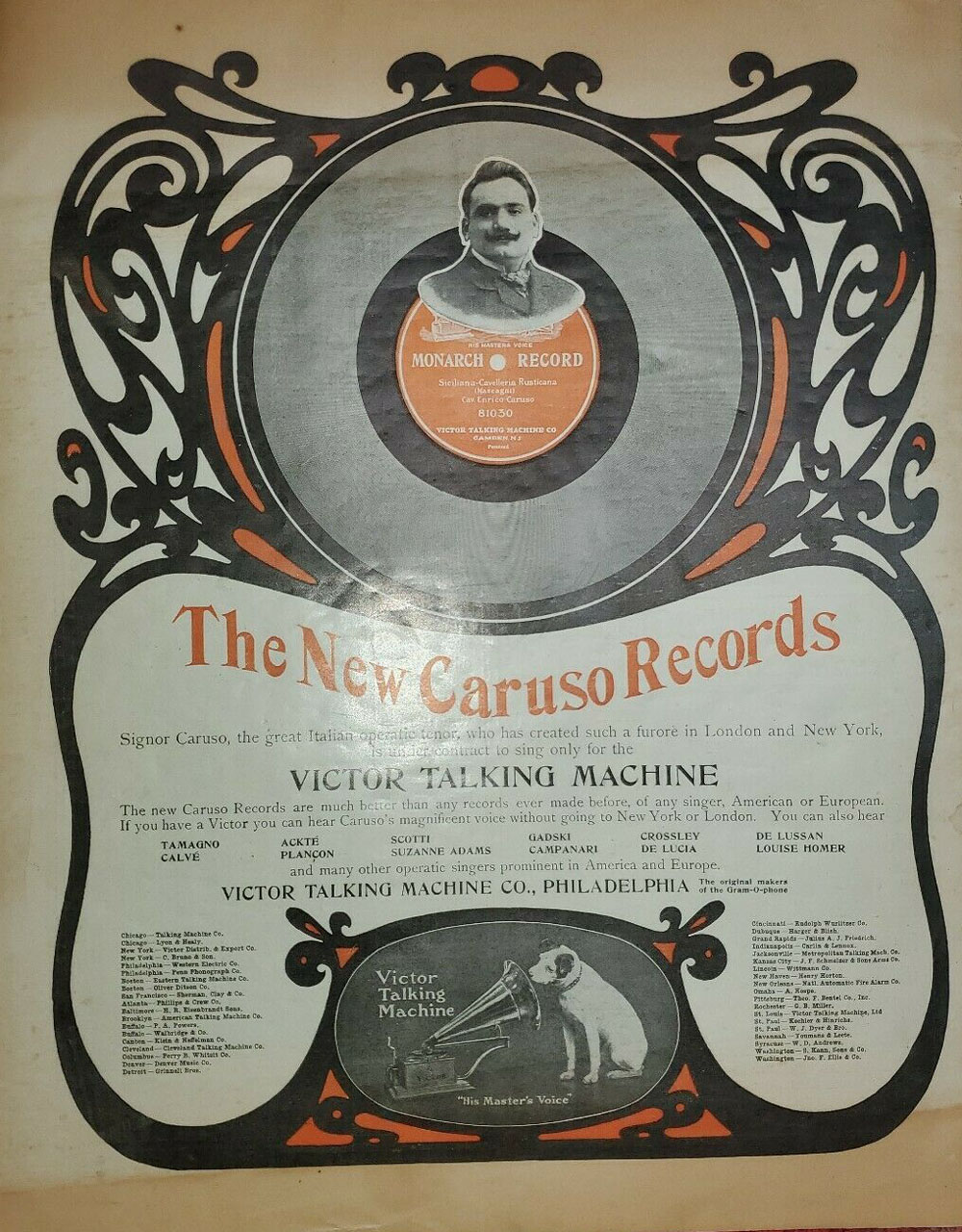
The Saturday Evening
Post, April 9, 1904 (PM-1359)
According to David Suisman in Selling
Sounds, this was the first full page advertisement by Victor
"devoted to a single artist. The text emphasizes both the reputation
Caruso had in Europe and his exclusive contract with Victor."
(2)
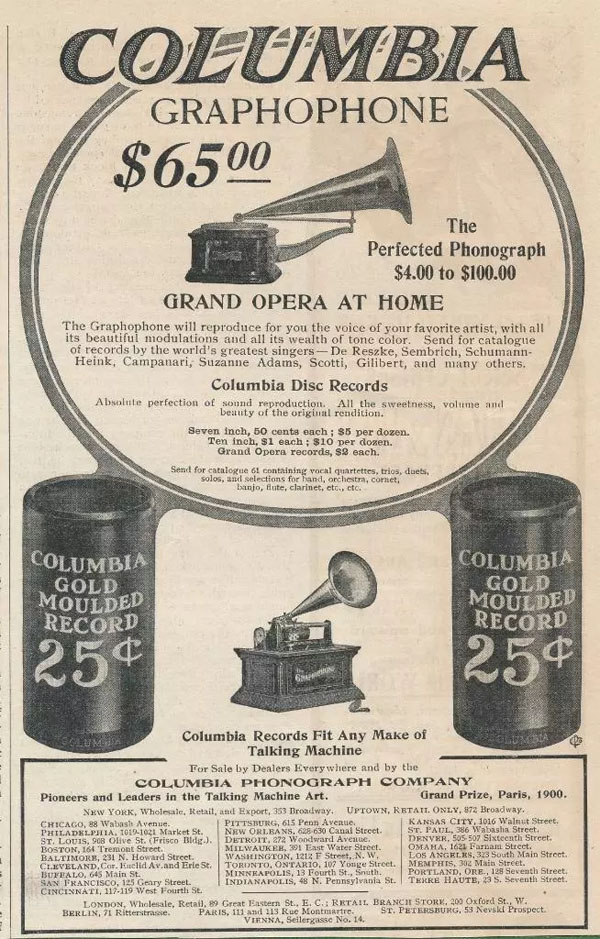
Columbia Graphophone
"Grand Opera at Home", 1904 (5.5" x 7")

January 1904
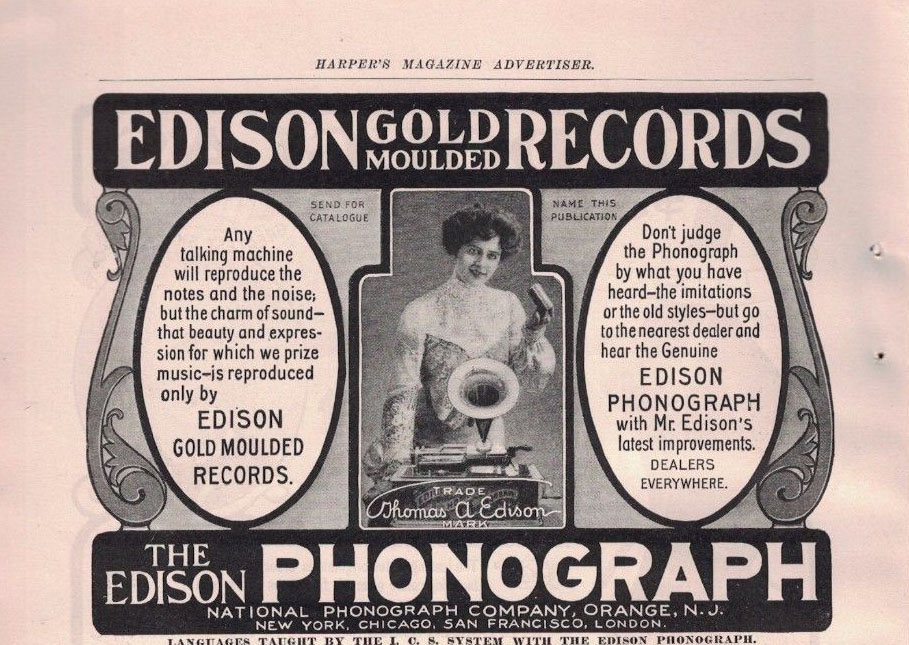
Harper's Magazine,
1904 (1/2 page ad)
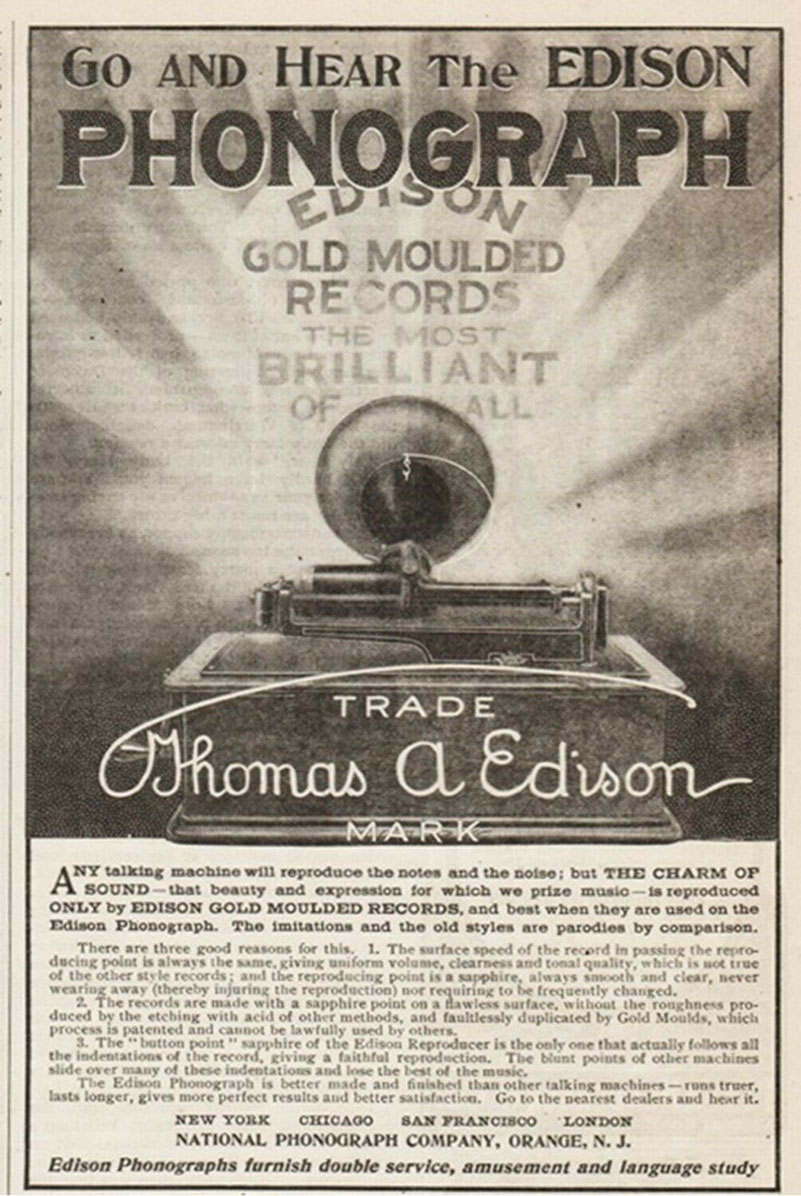
"Go and Hear the Edison Phonograph,"
The National Phonograph Company, The Saturday Evening Post,
5" x 7.25"
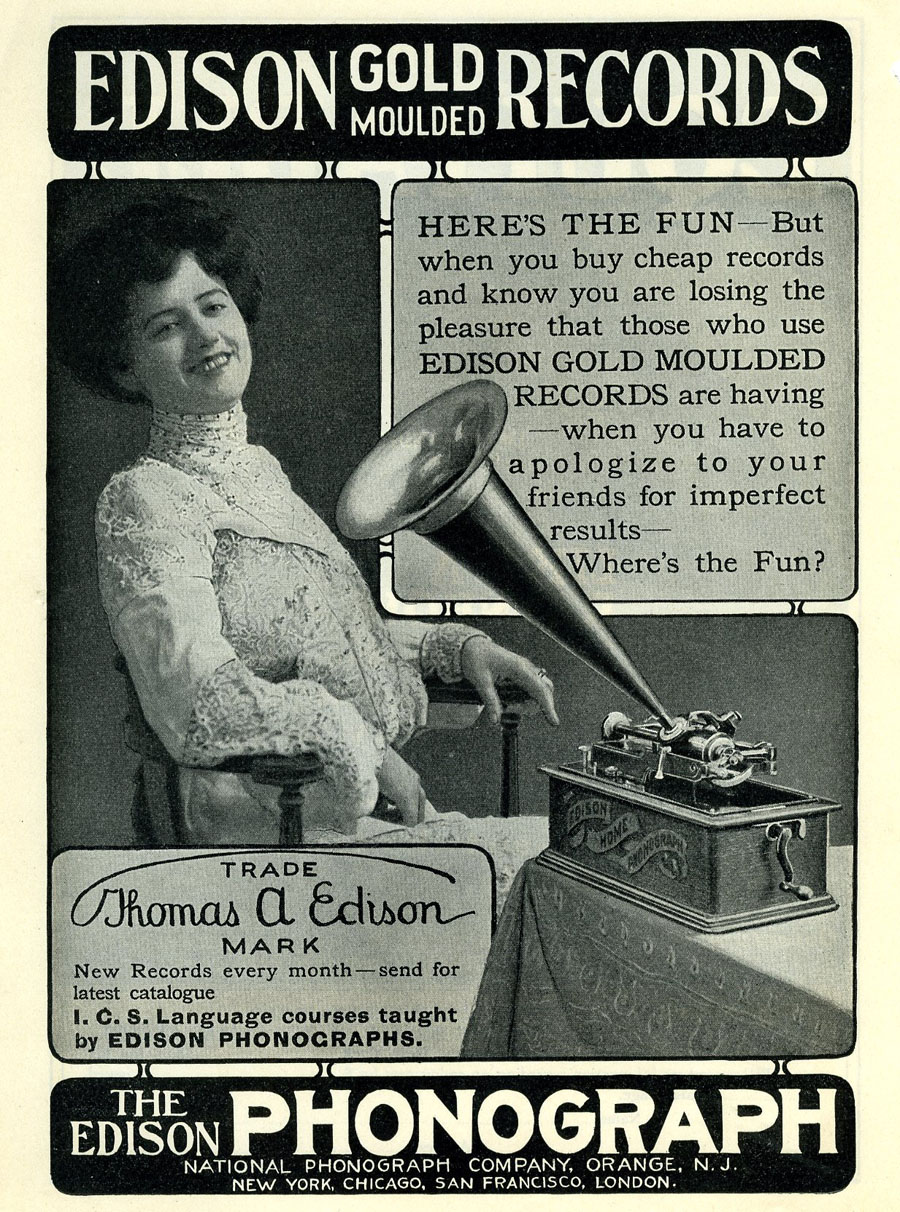
Booklovers, 1904
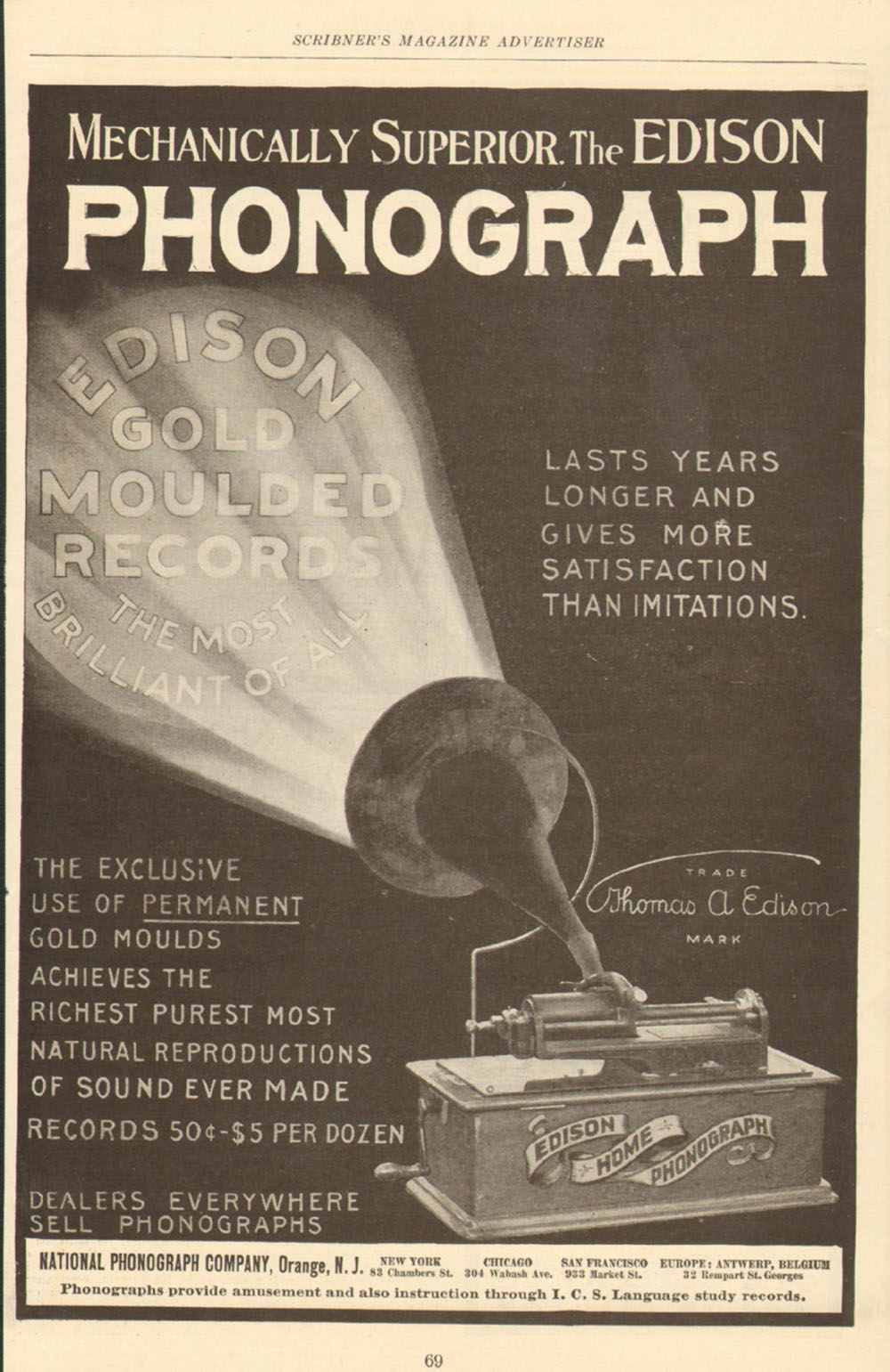
Scribner's, January
1904
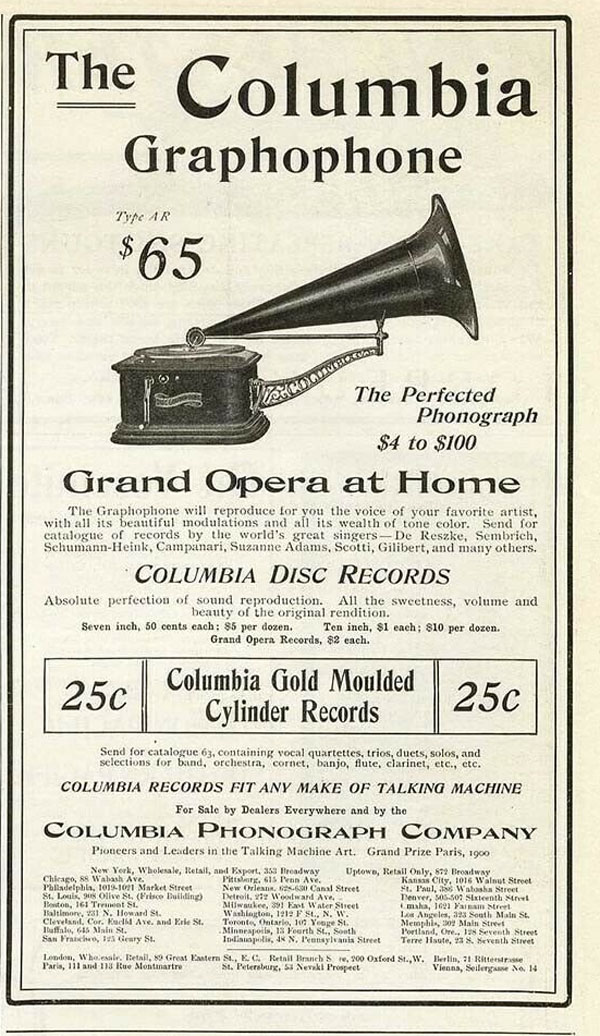
"Grand Opera at
Home," Collier's, May 21, 1904, 5" x 8"
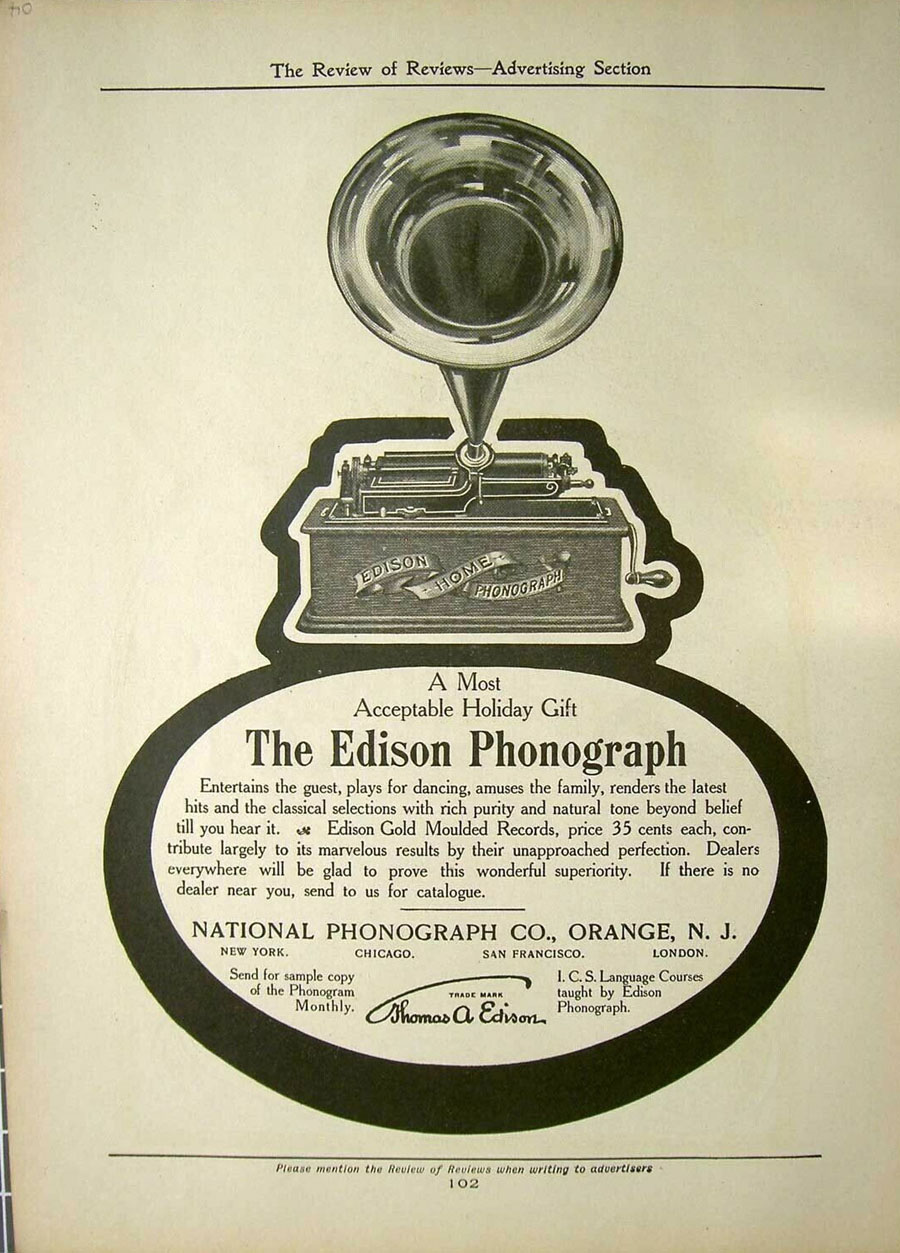
Review of Reviews,
November 1904
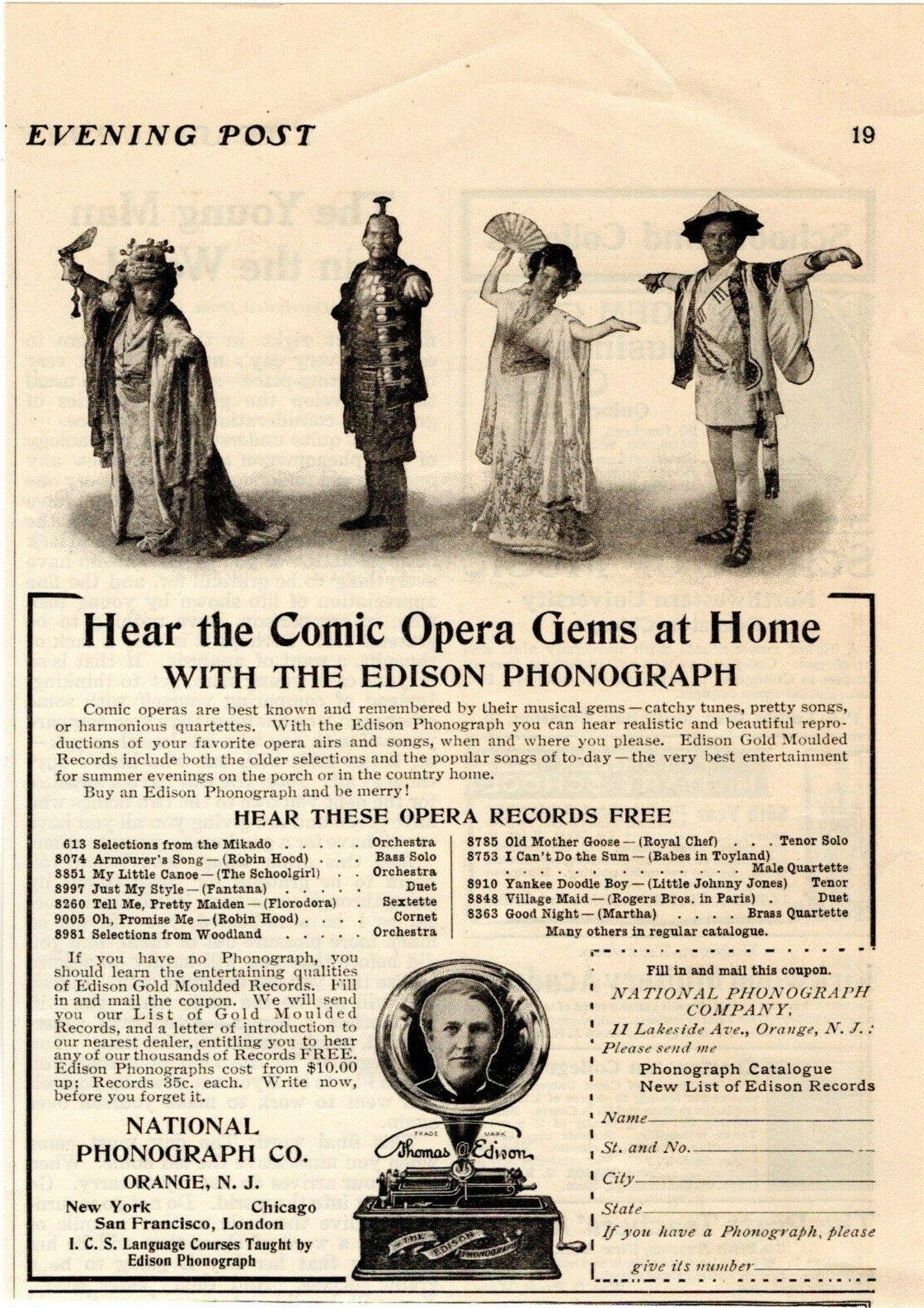
The Saturday Evening
Post, 1904

Phonographia
|
